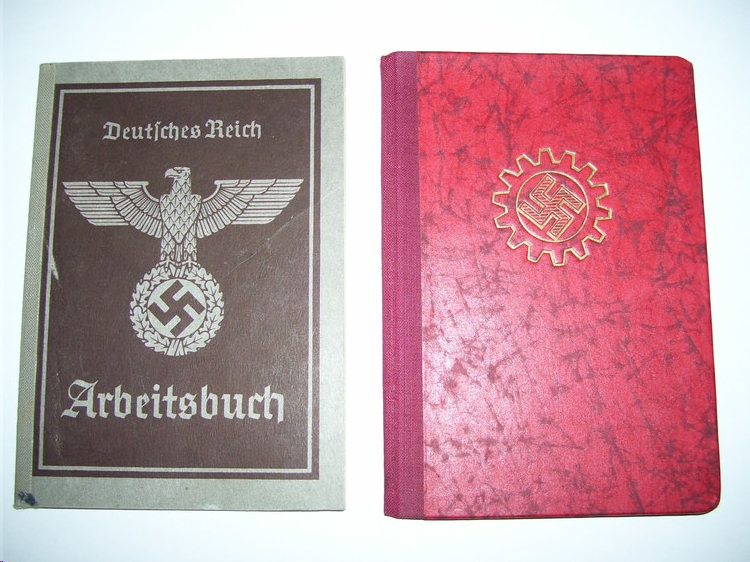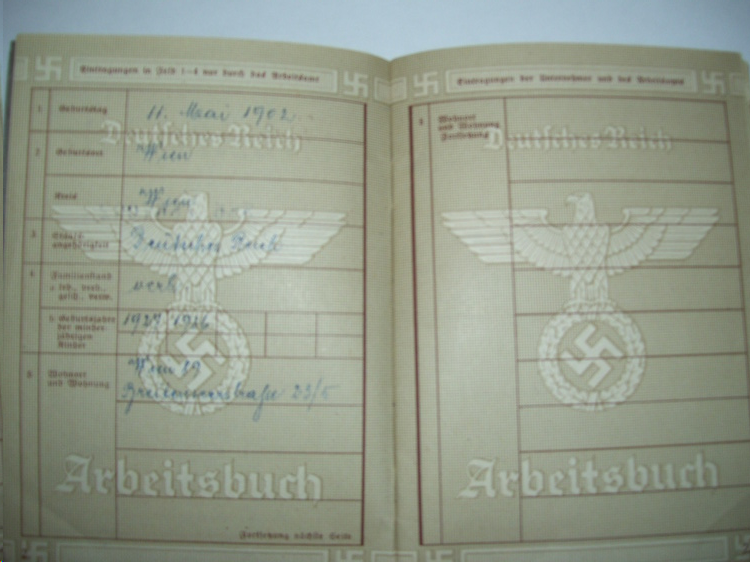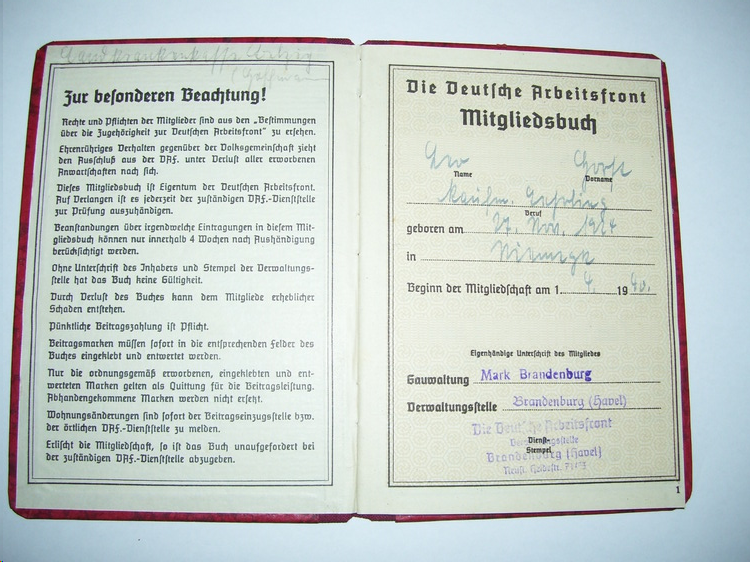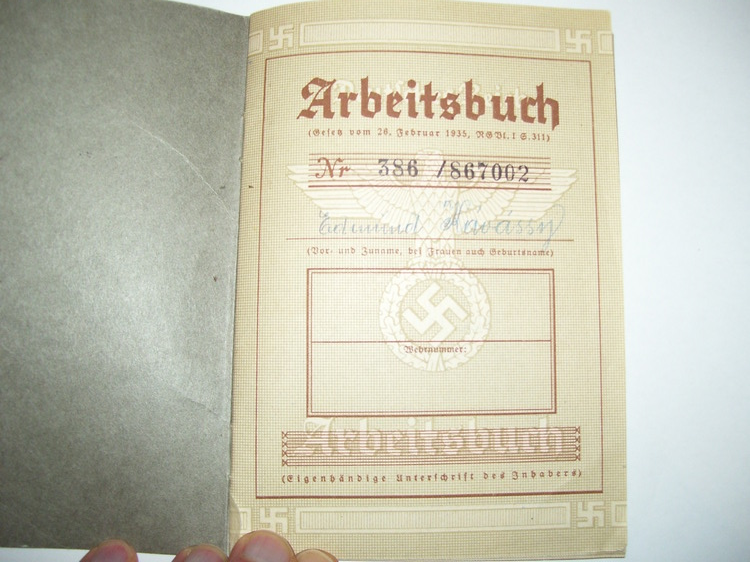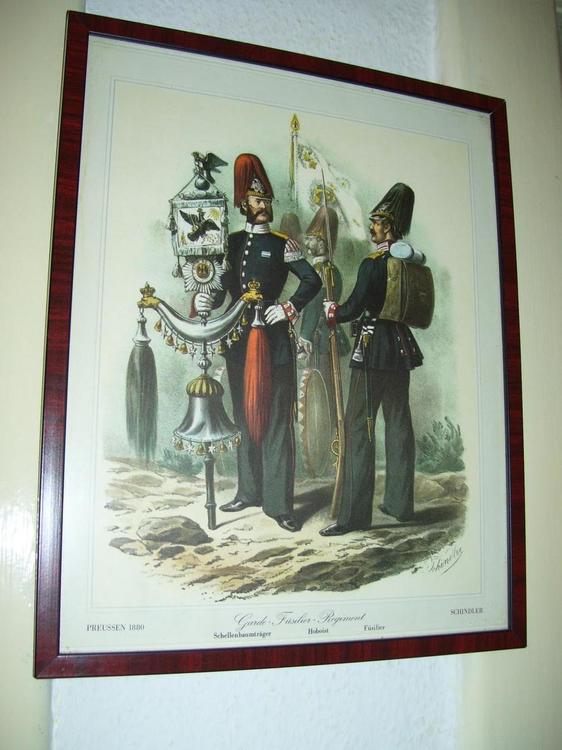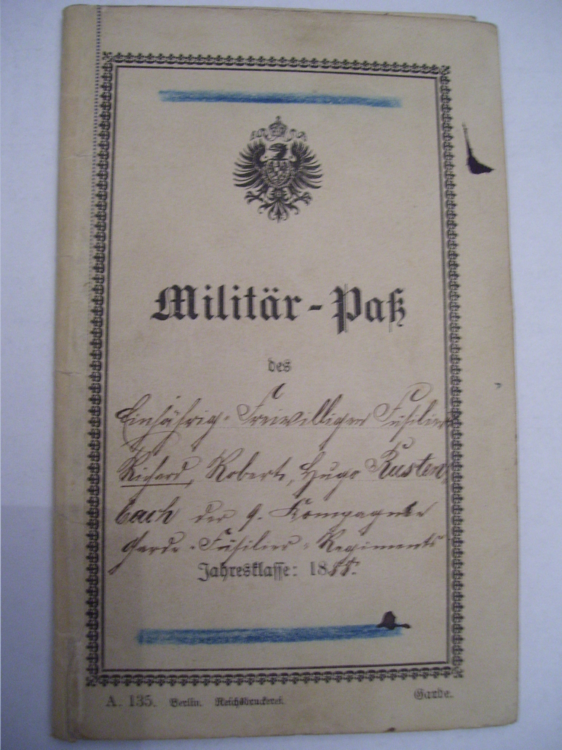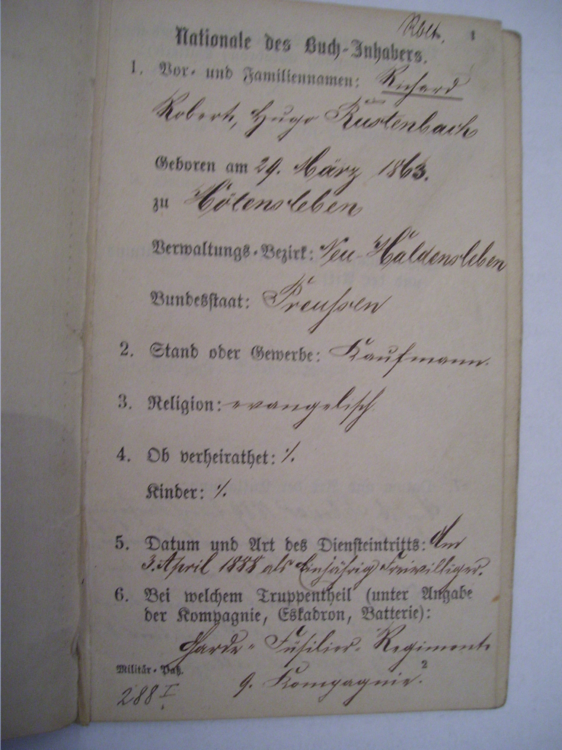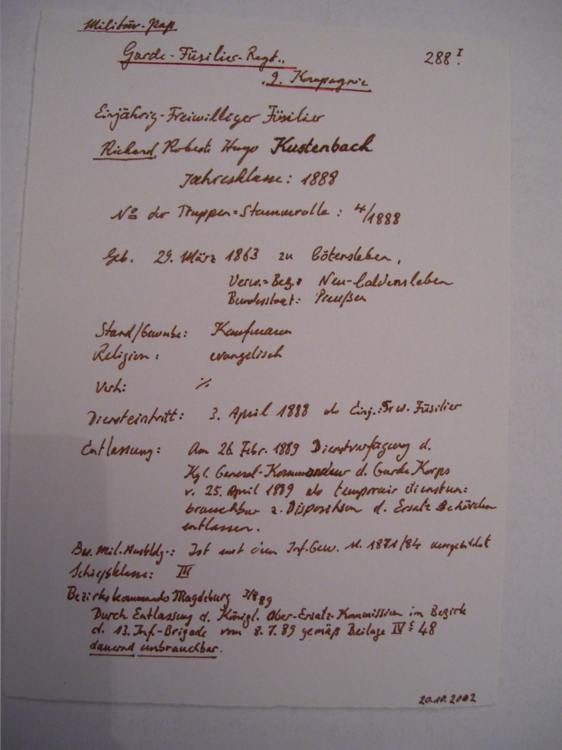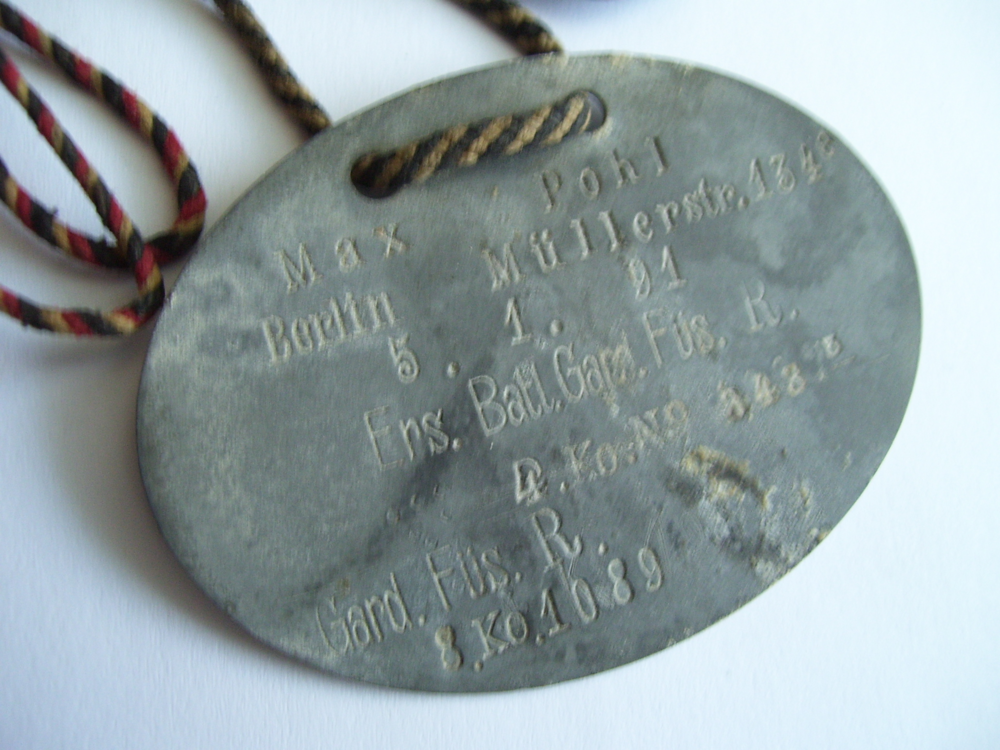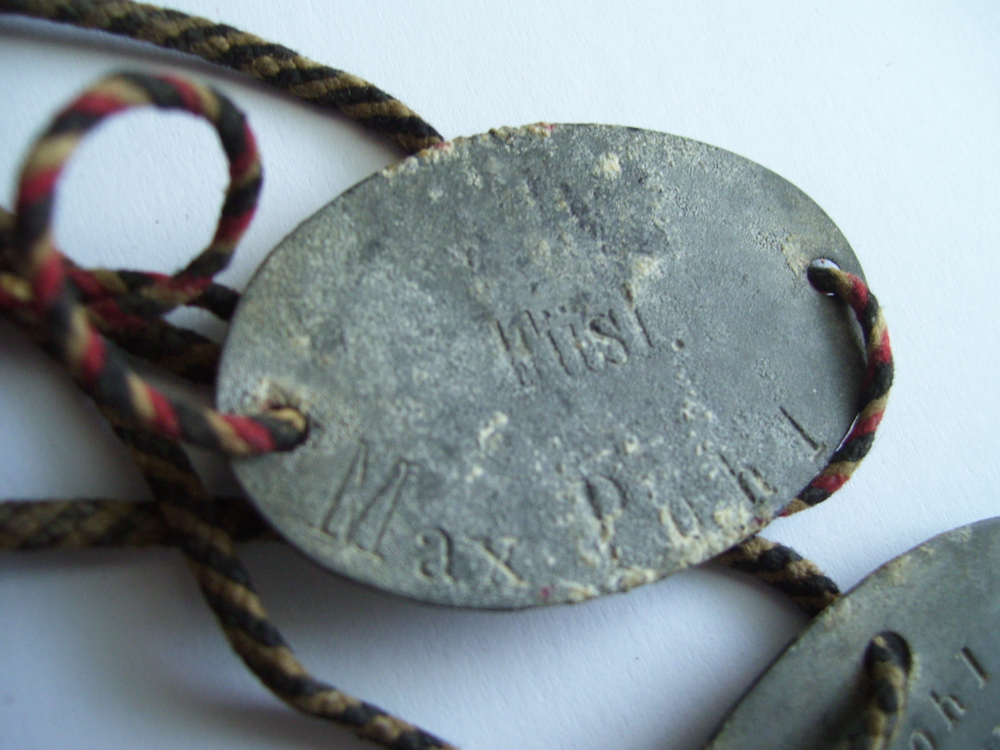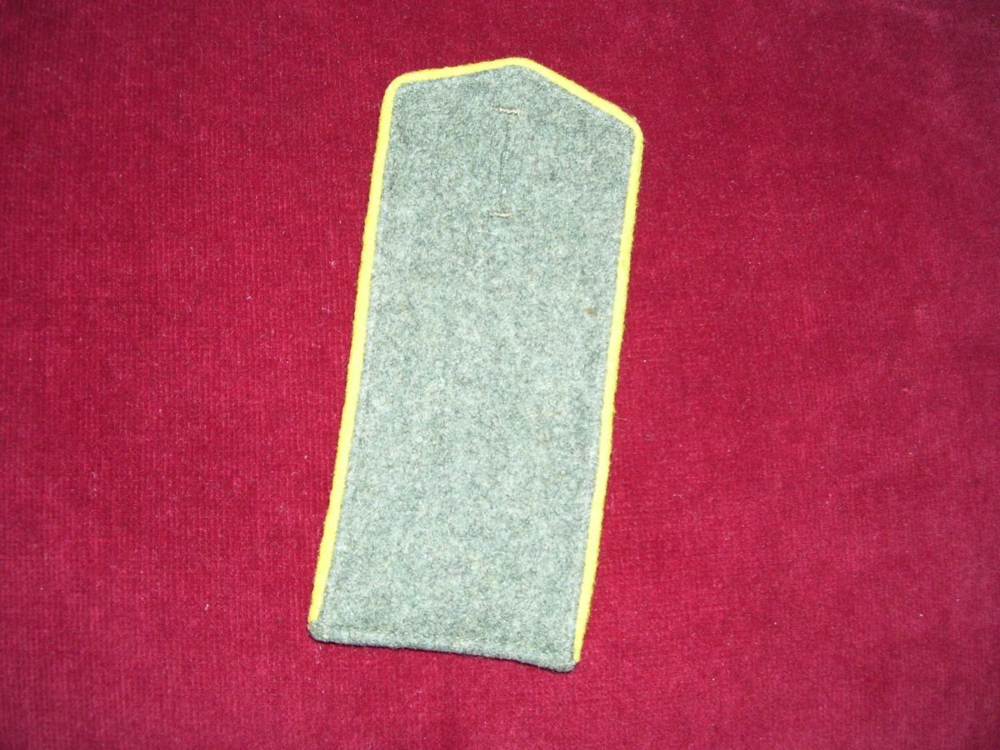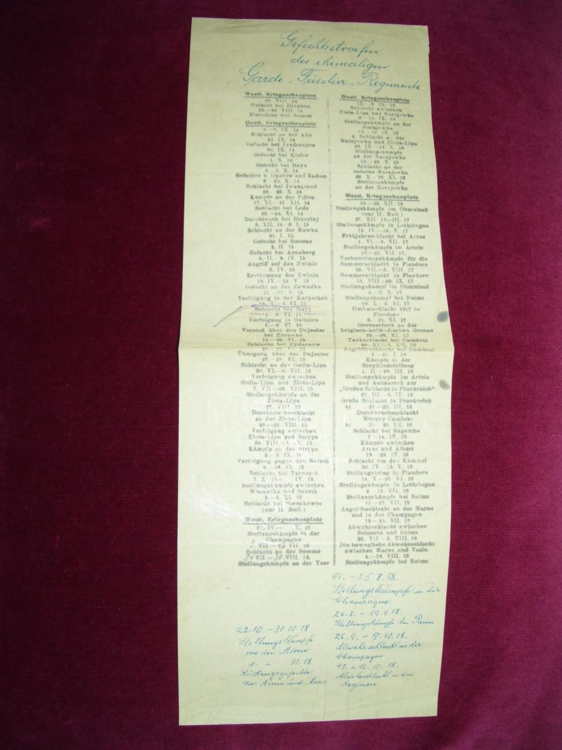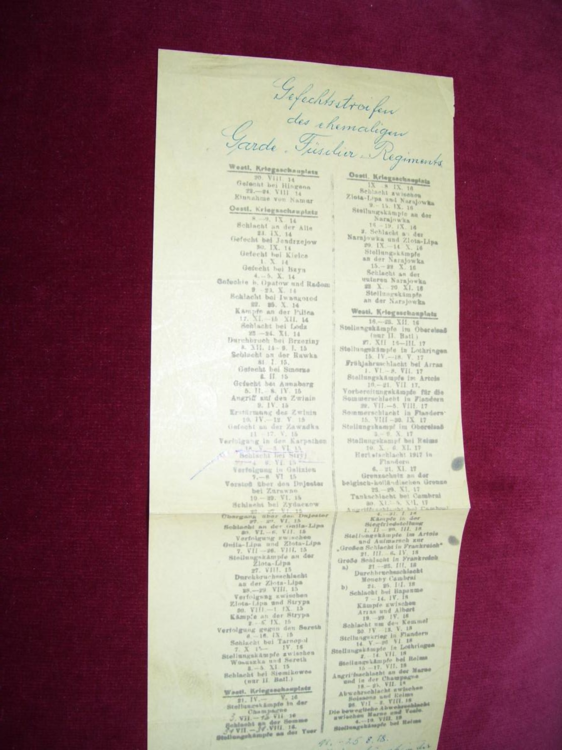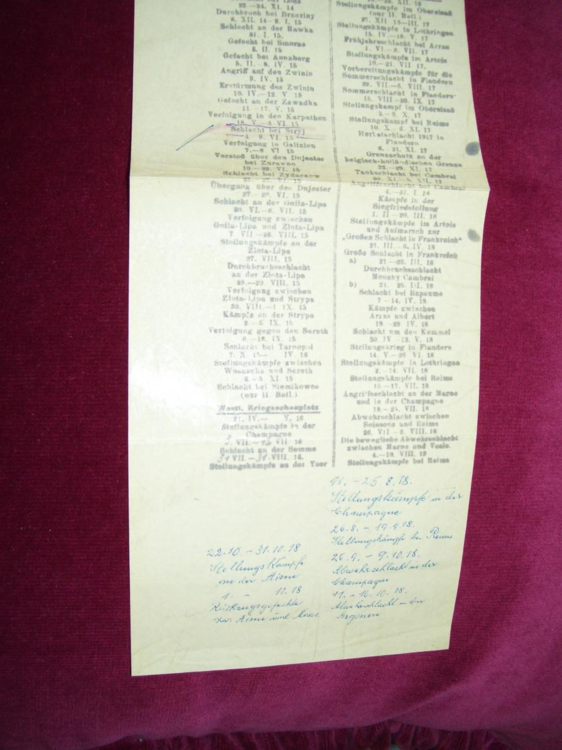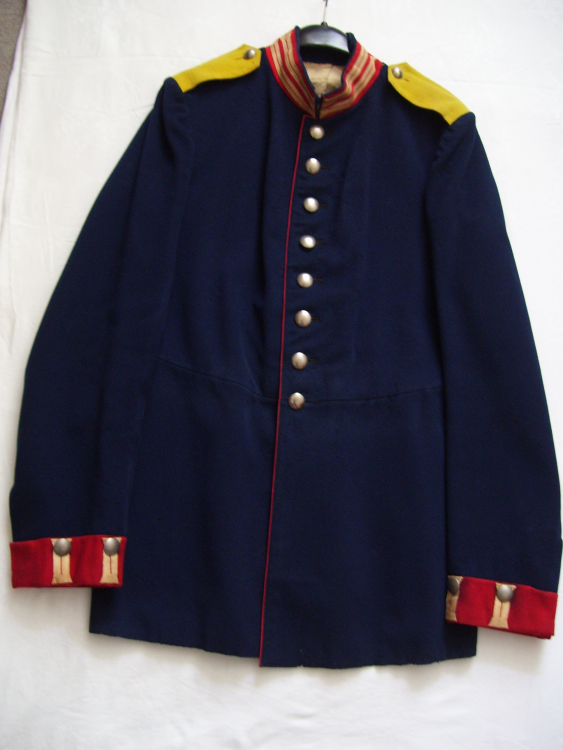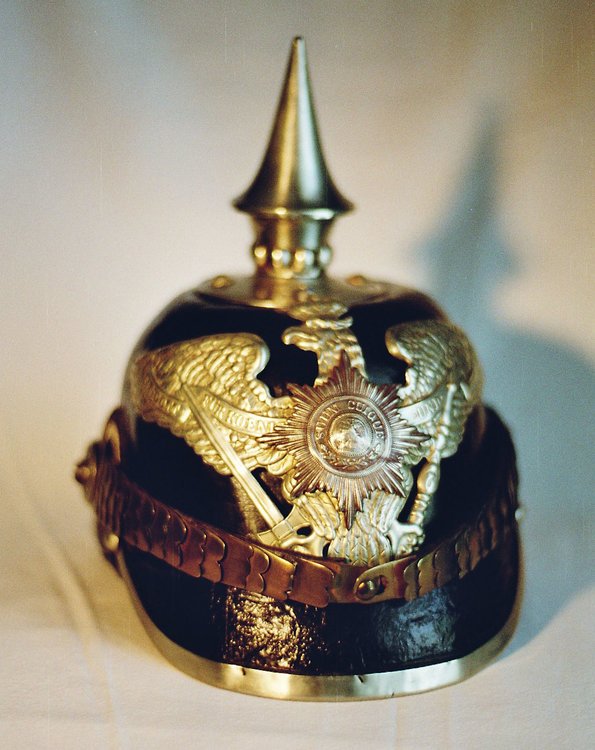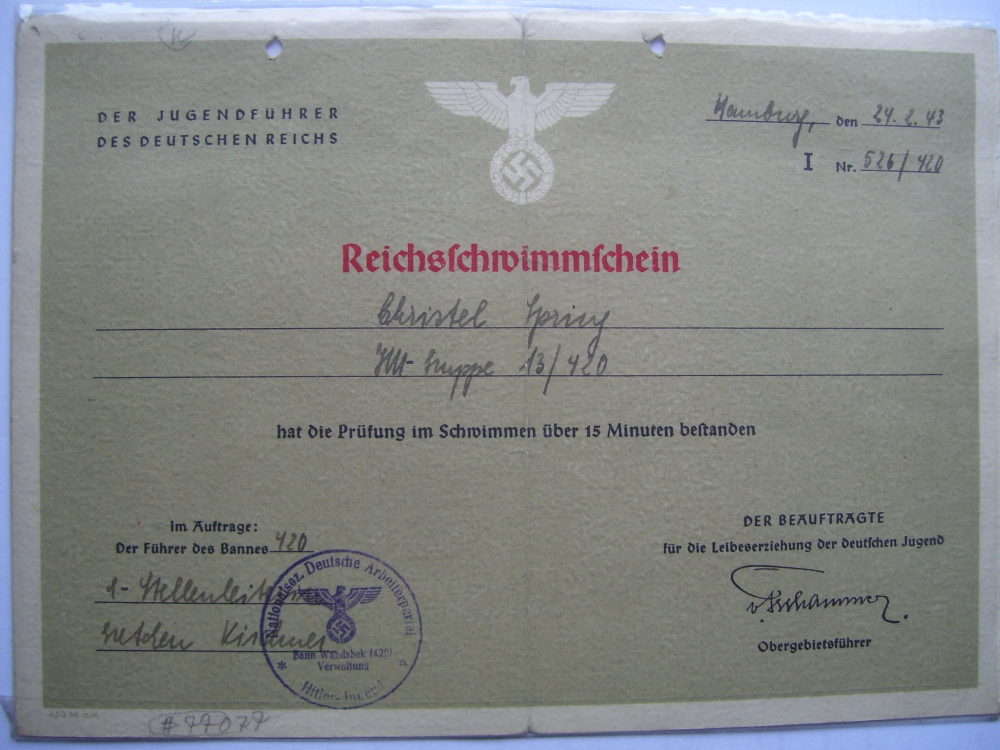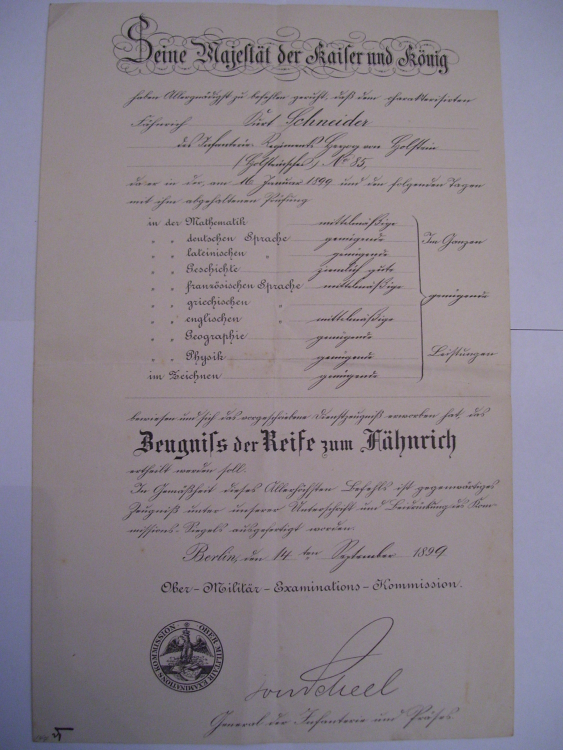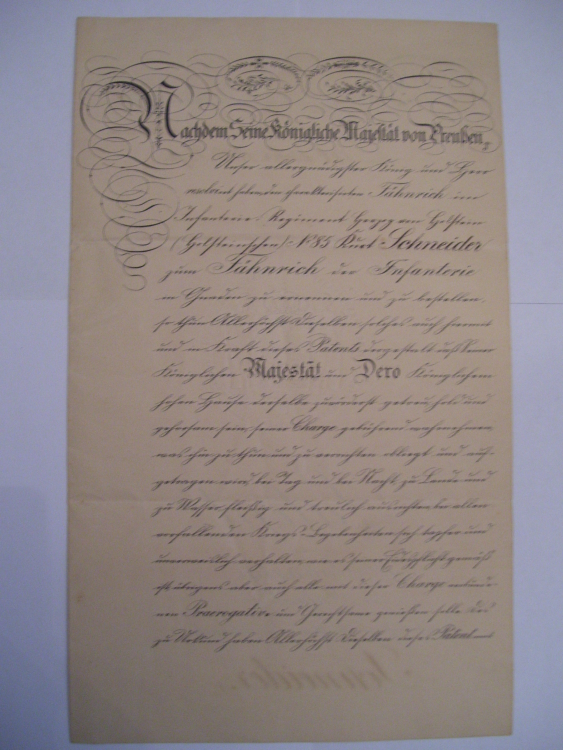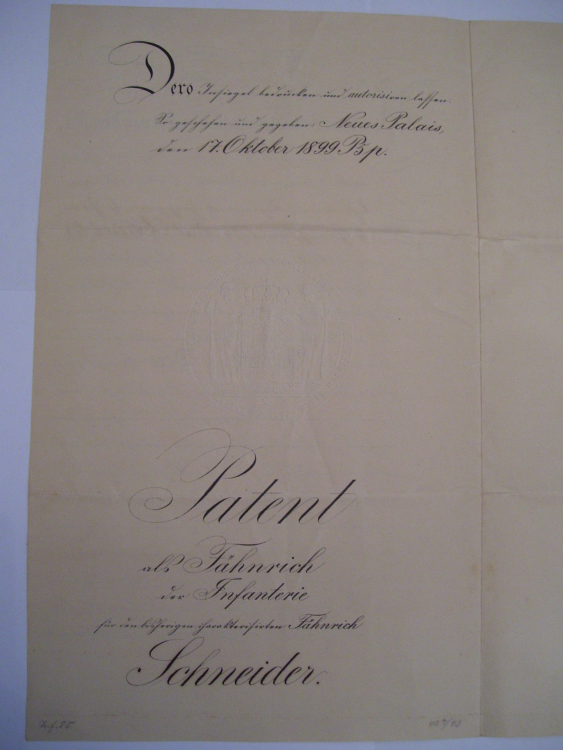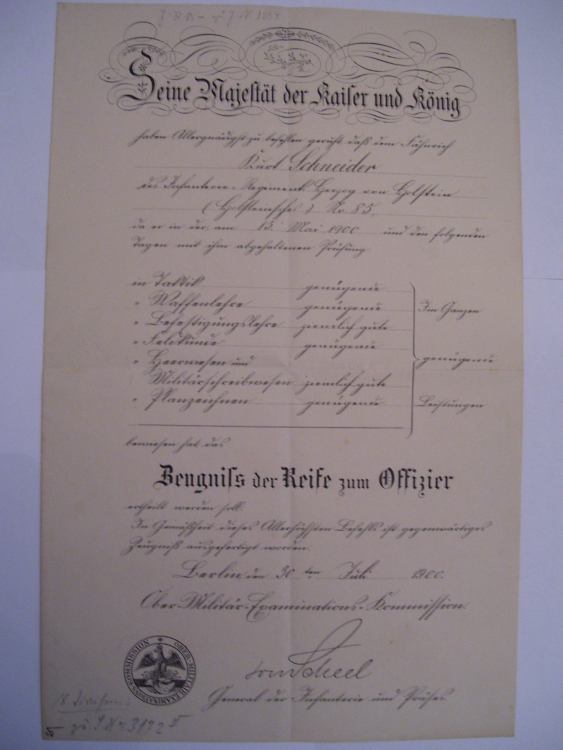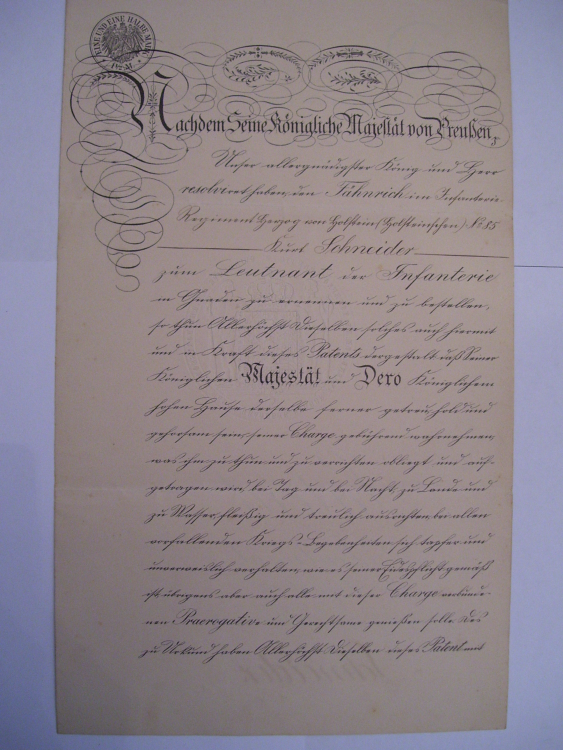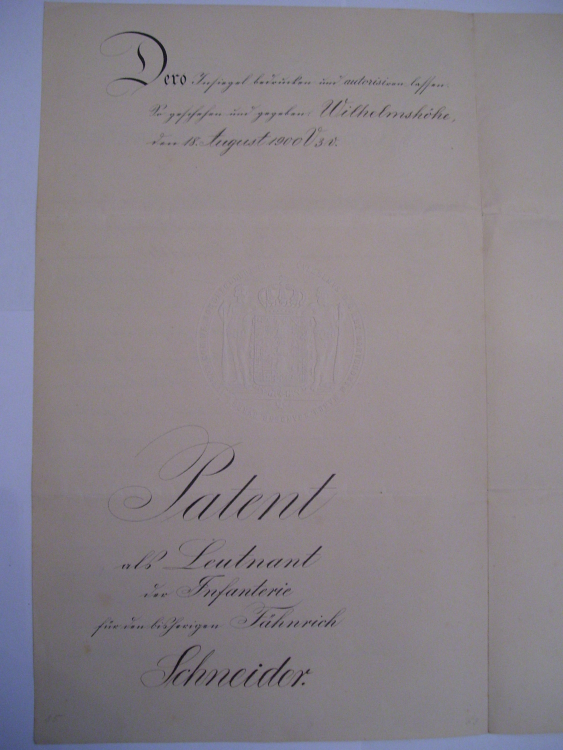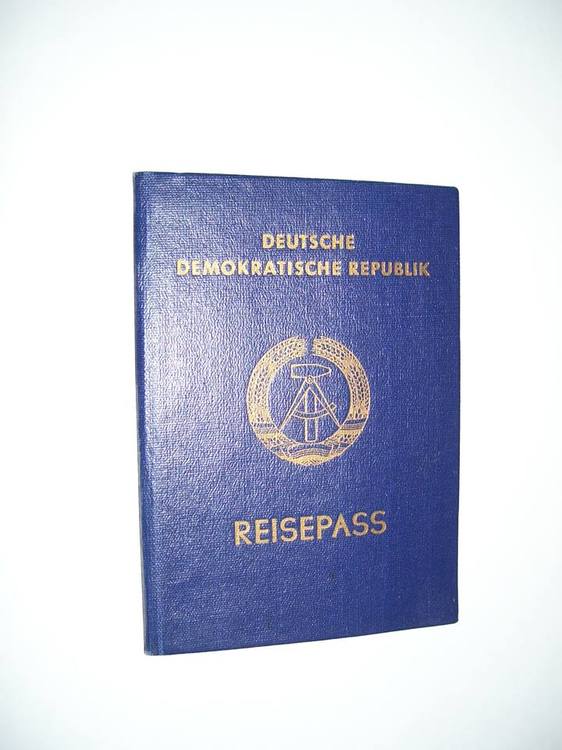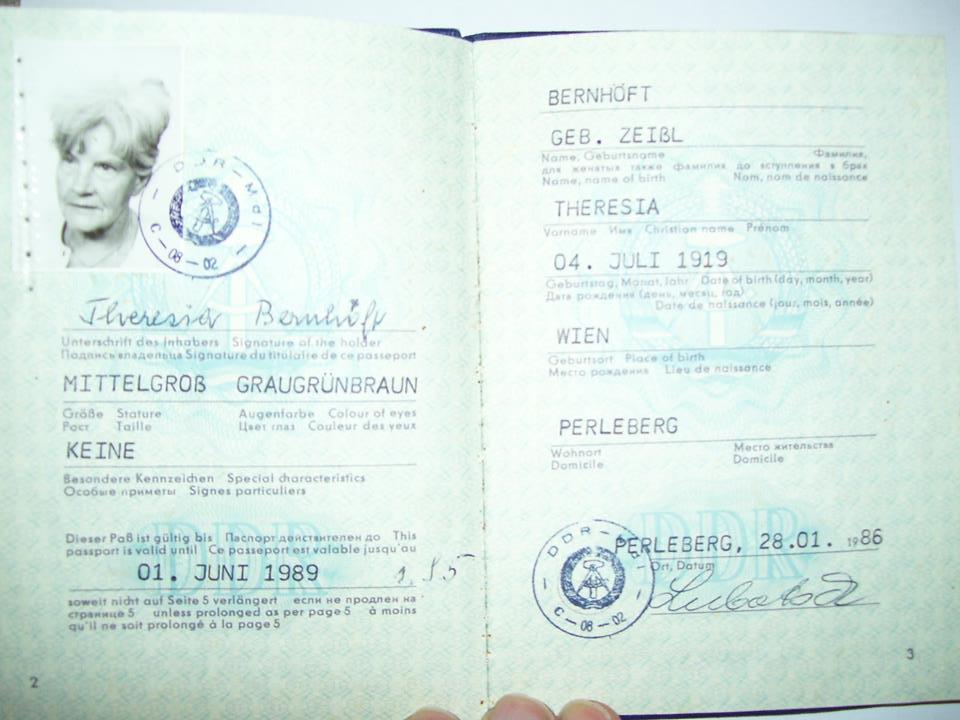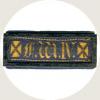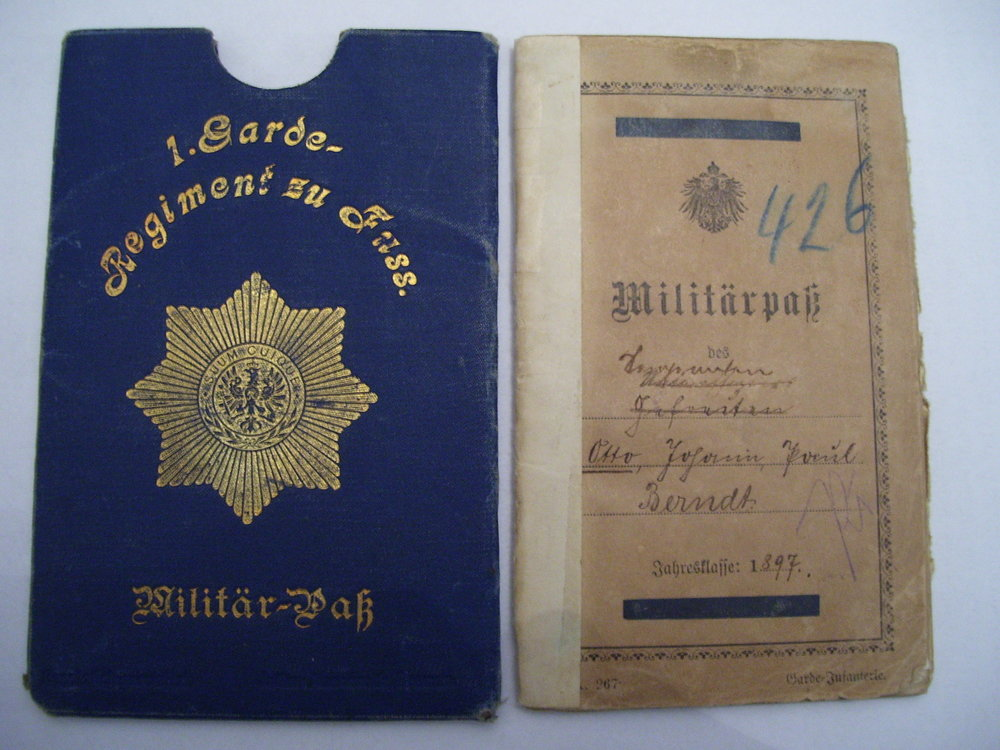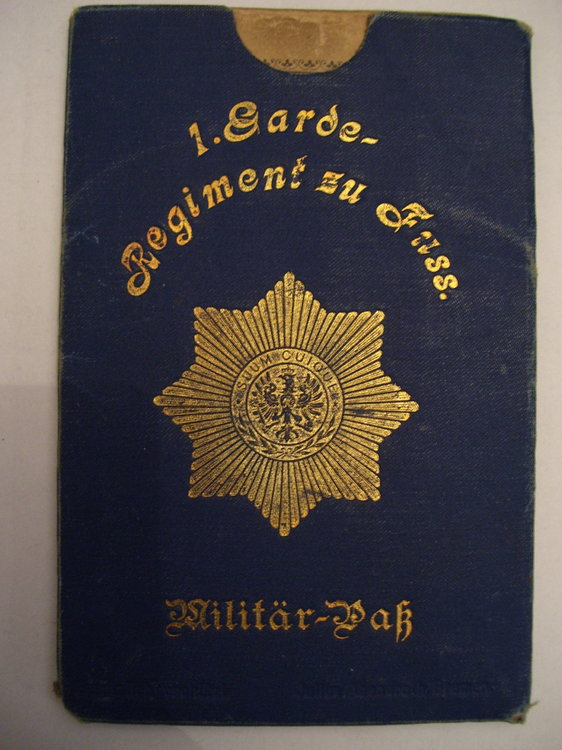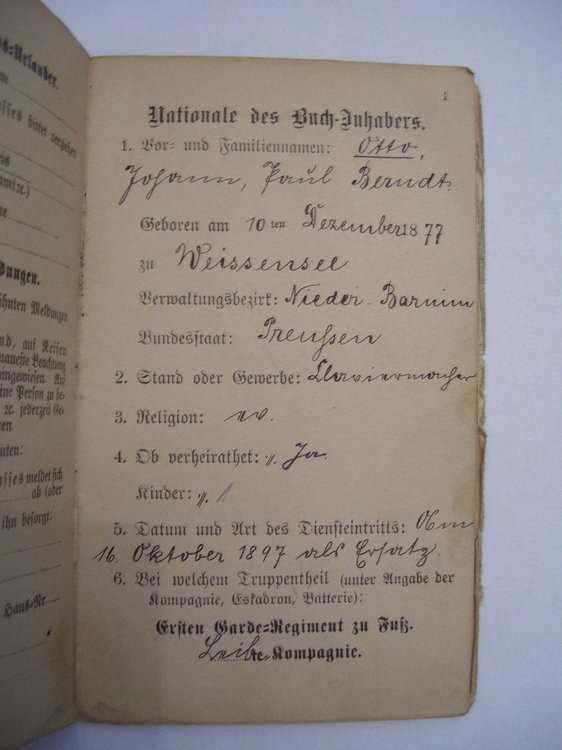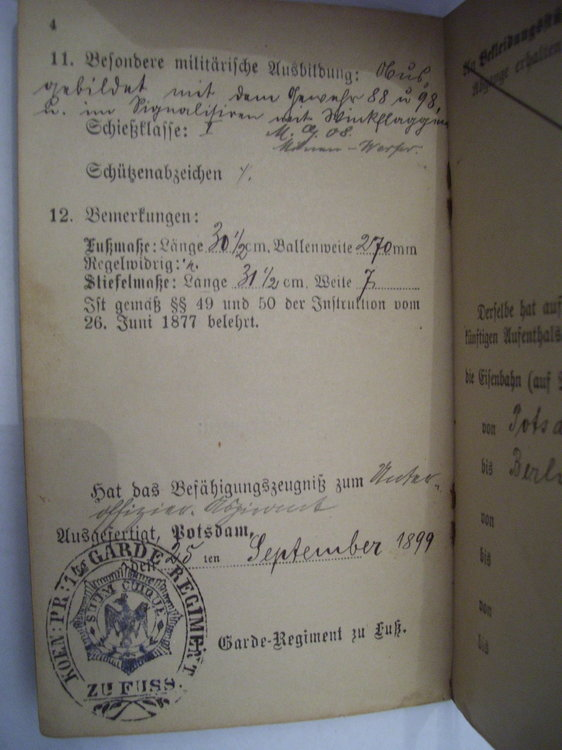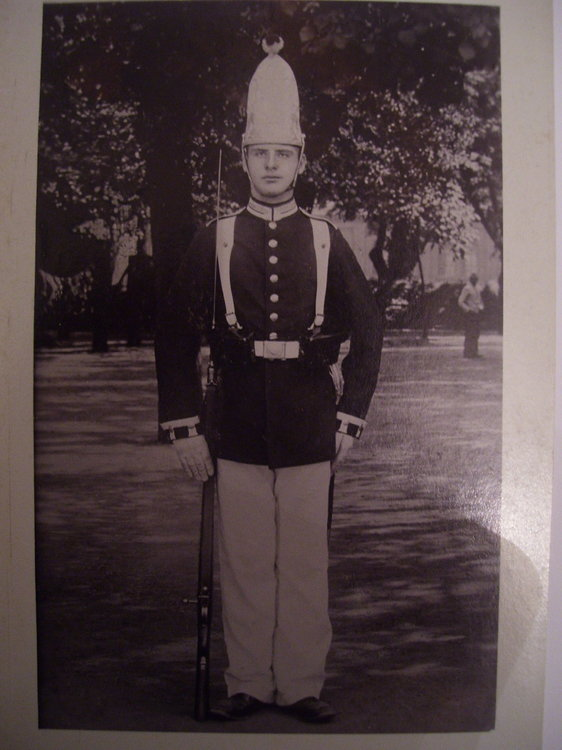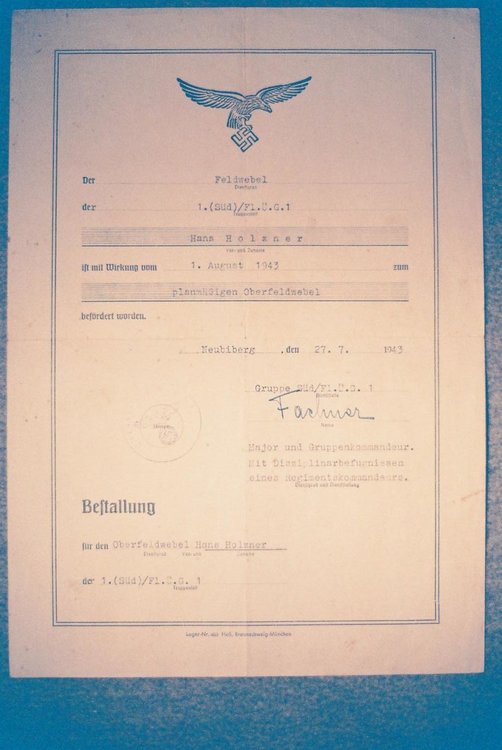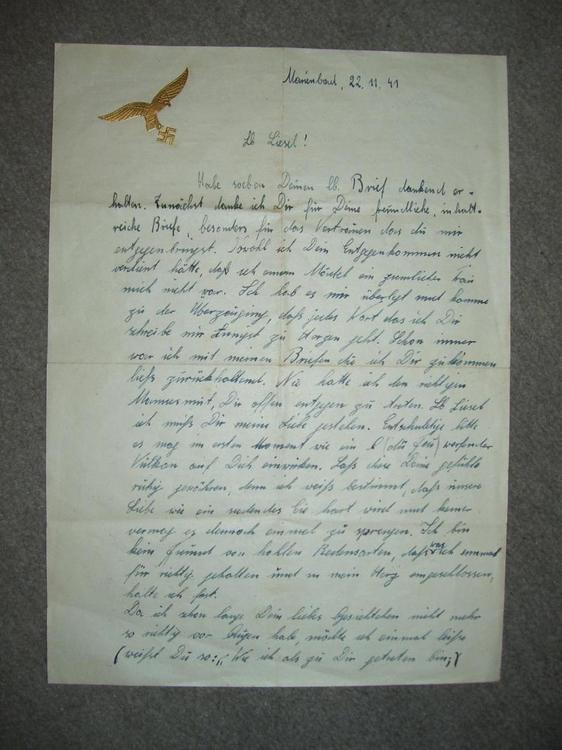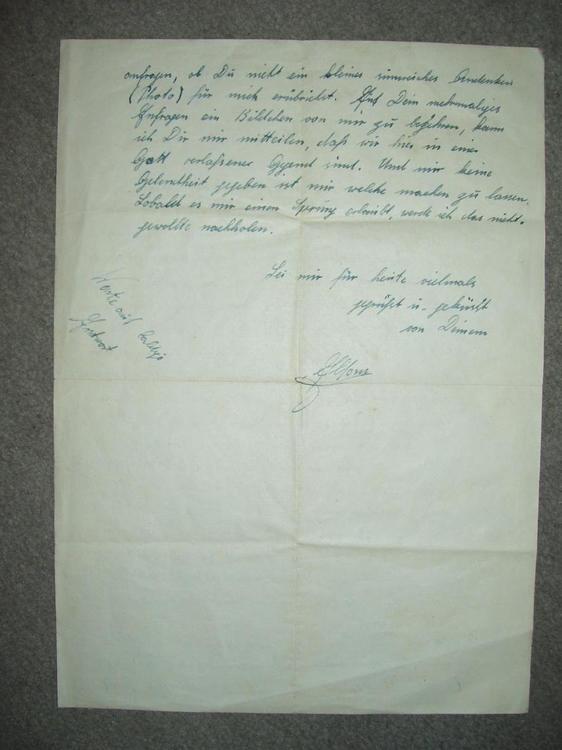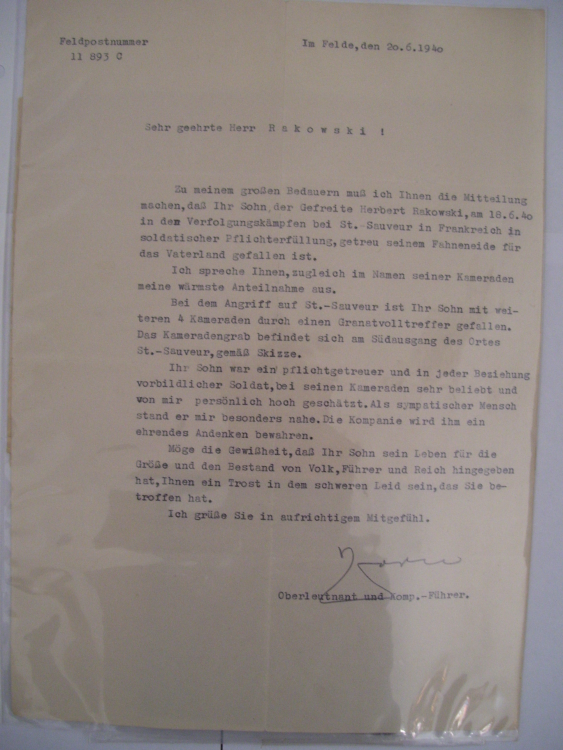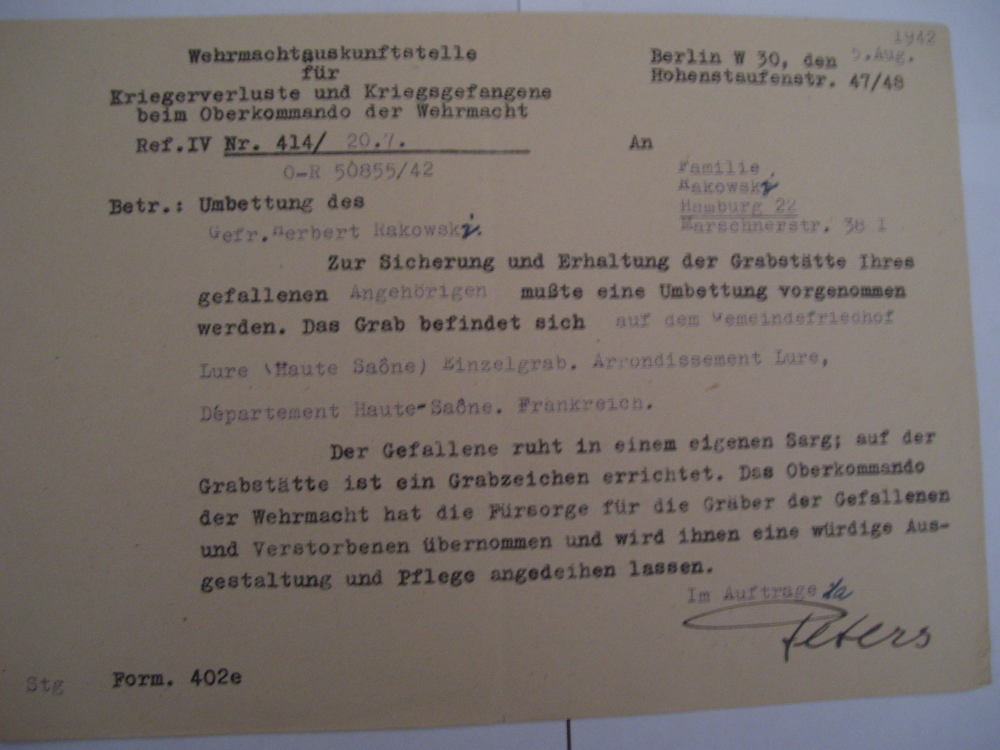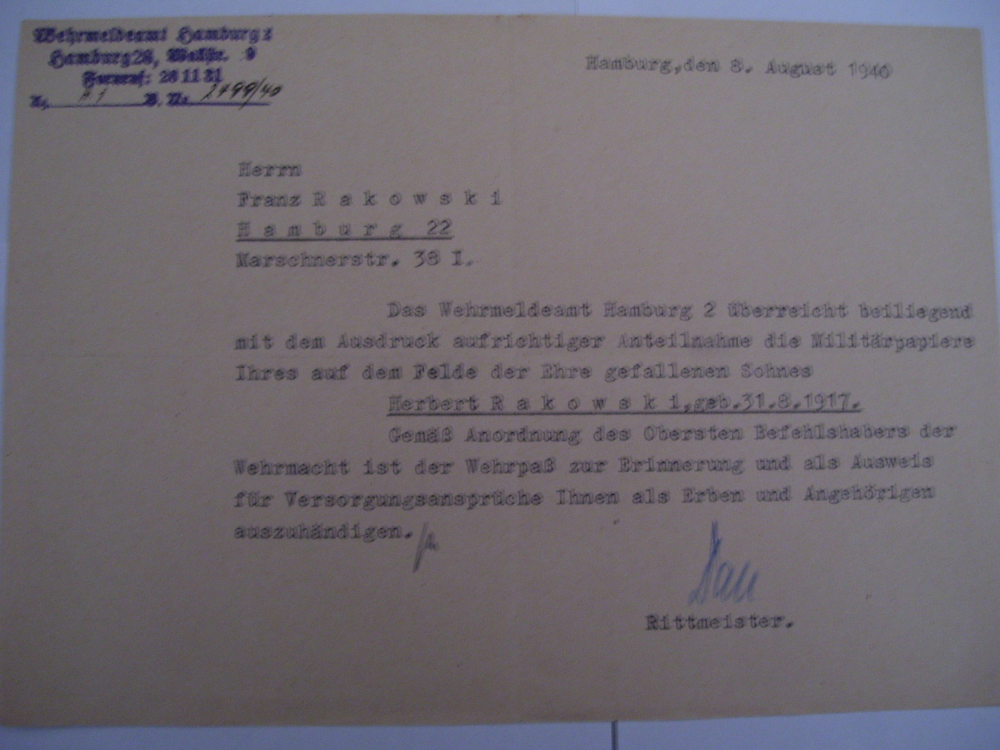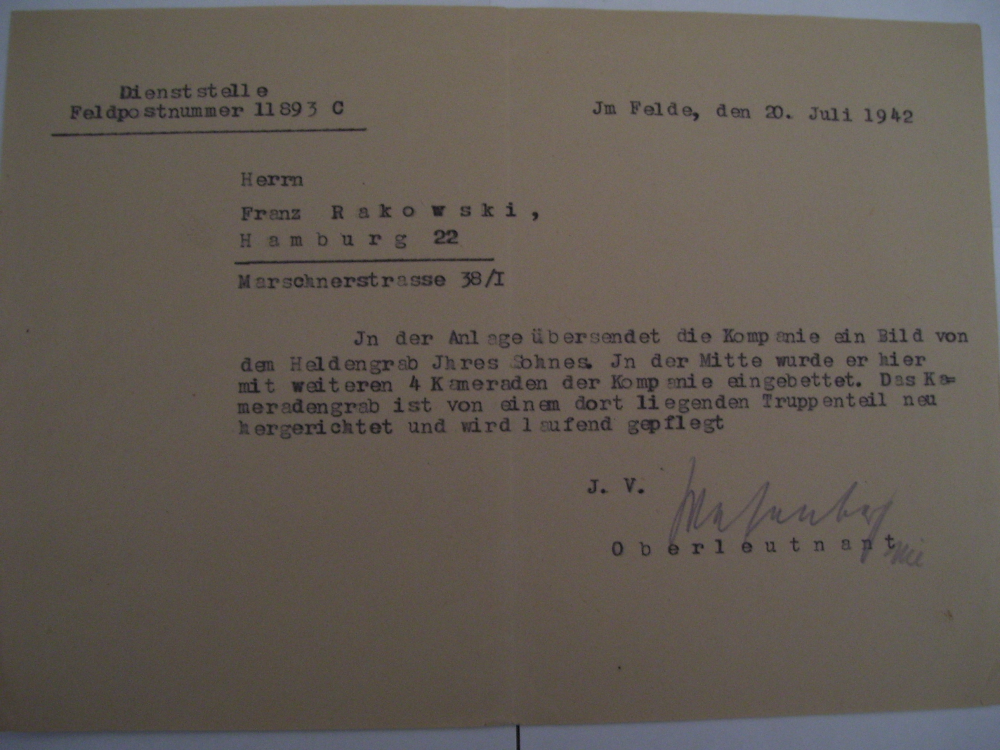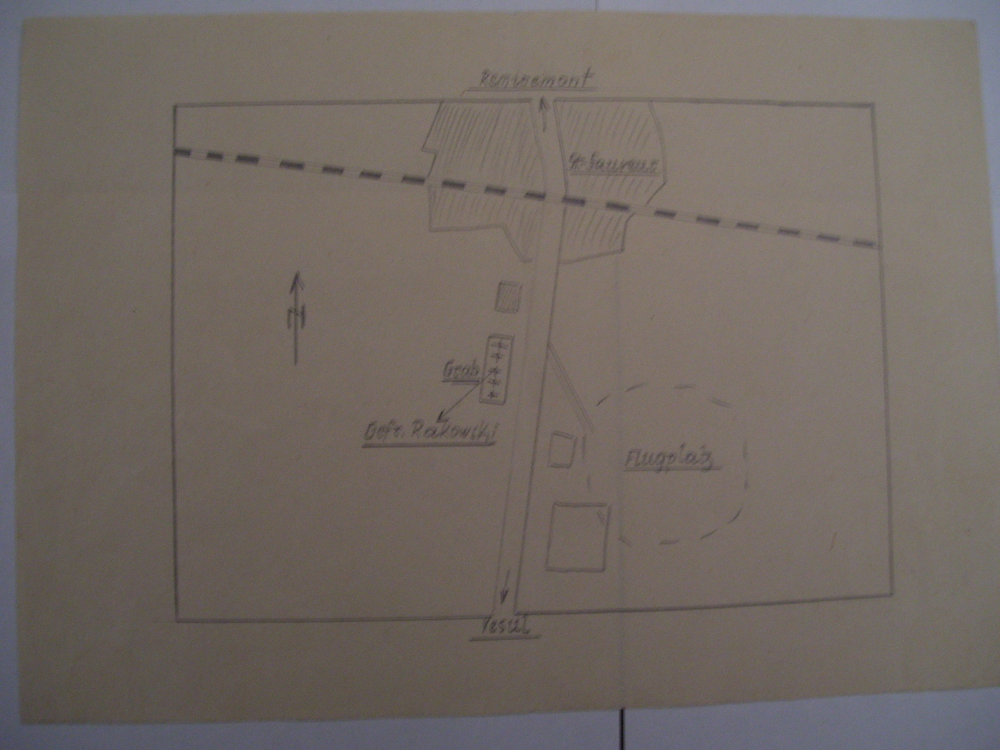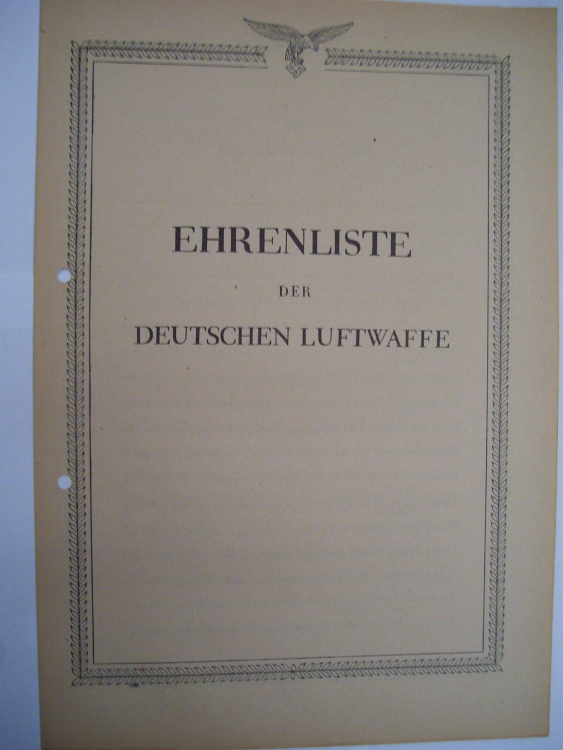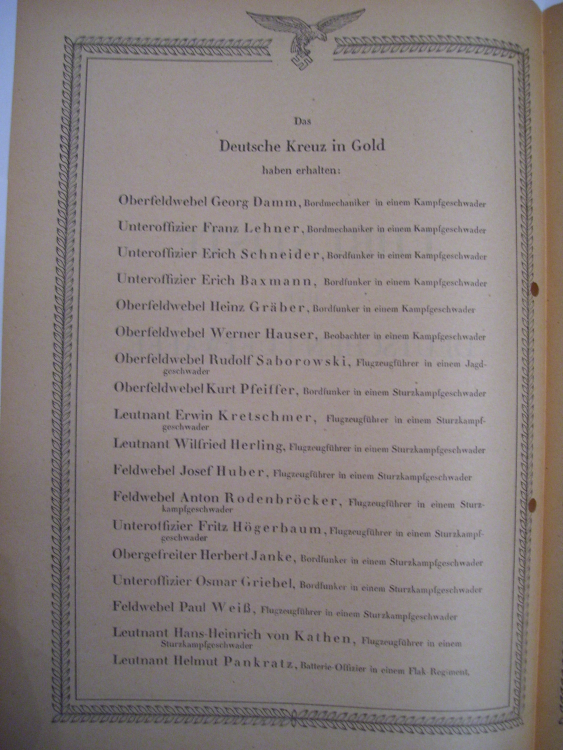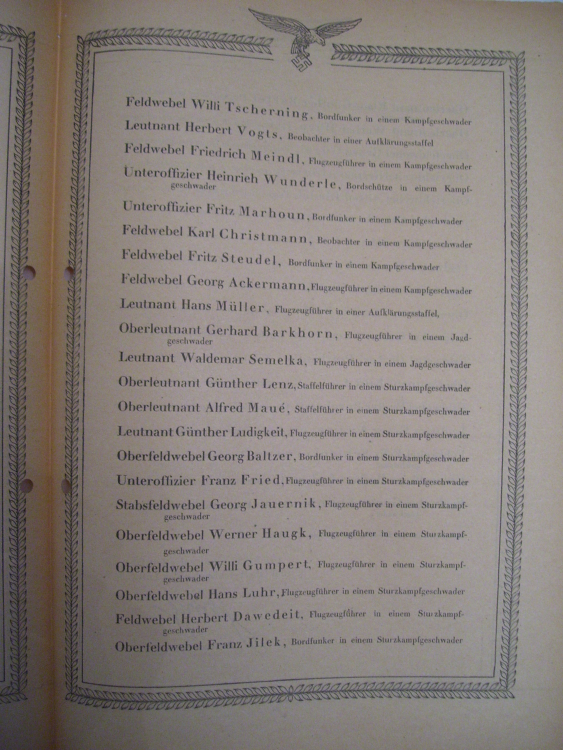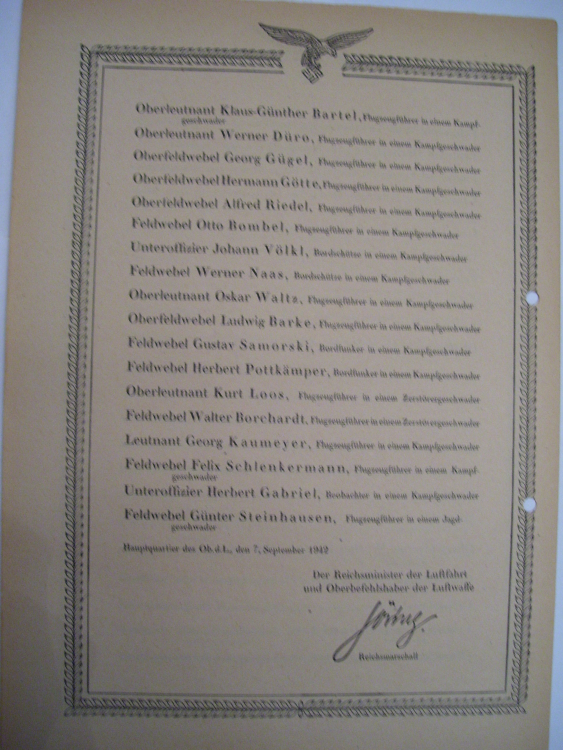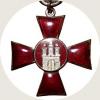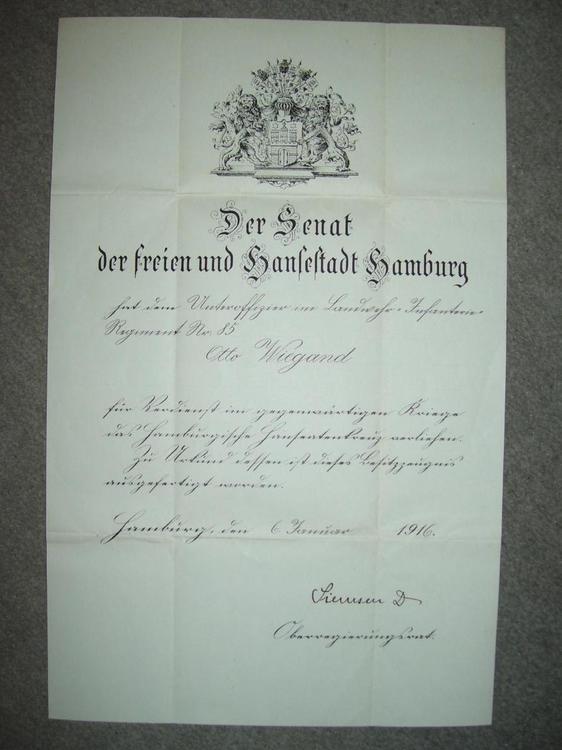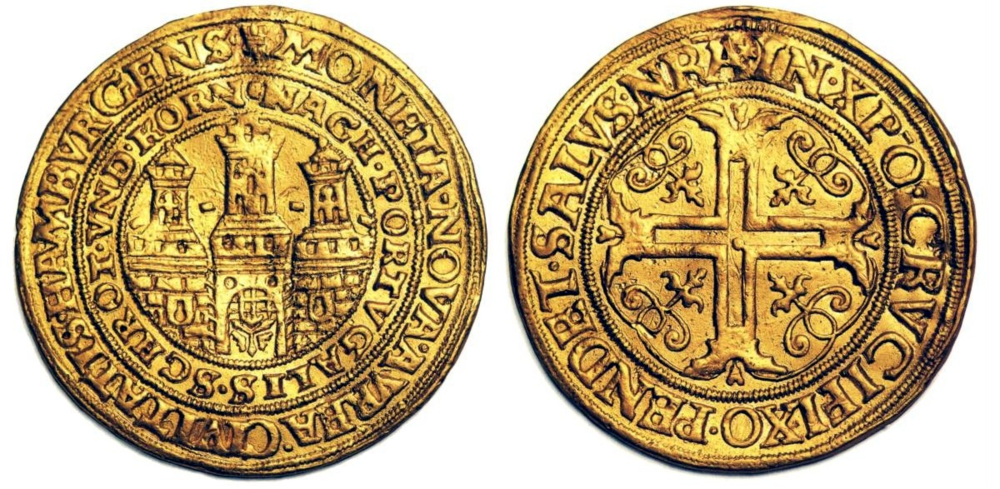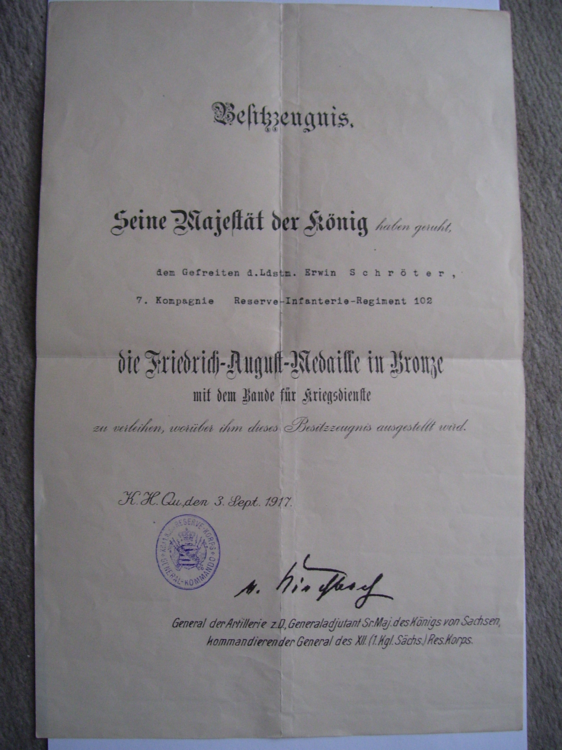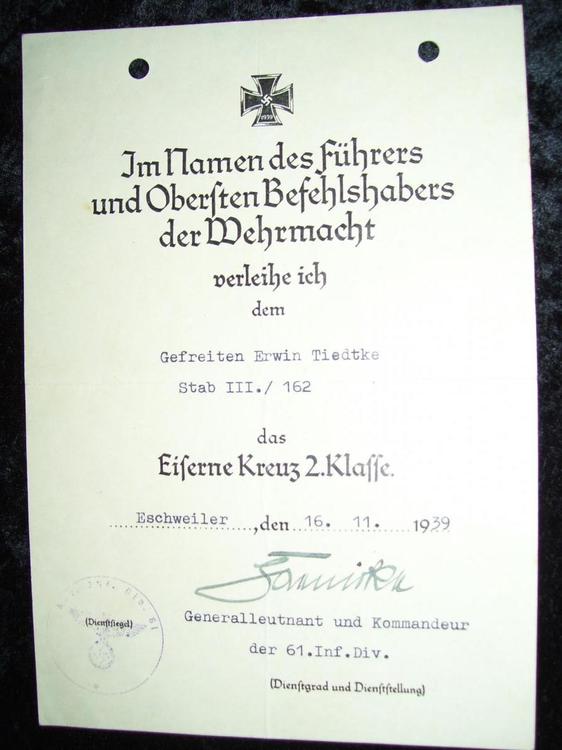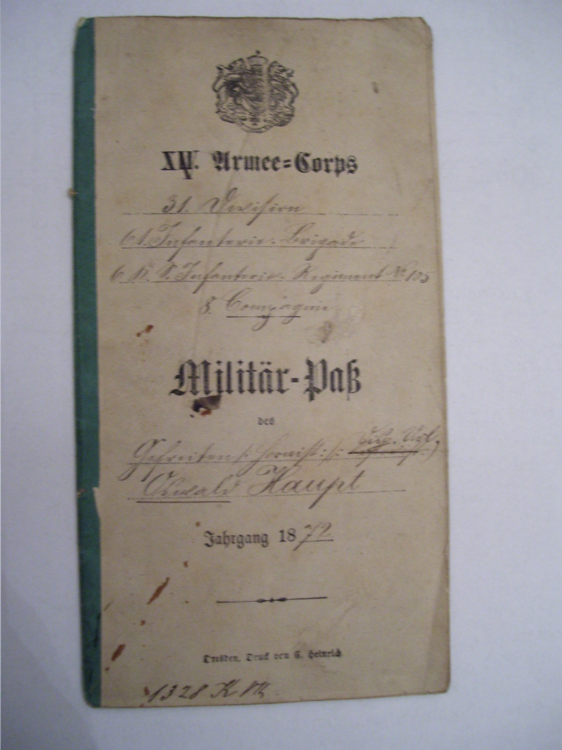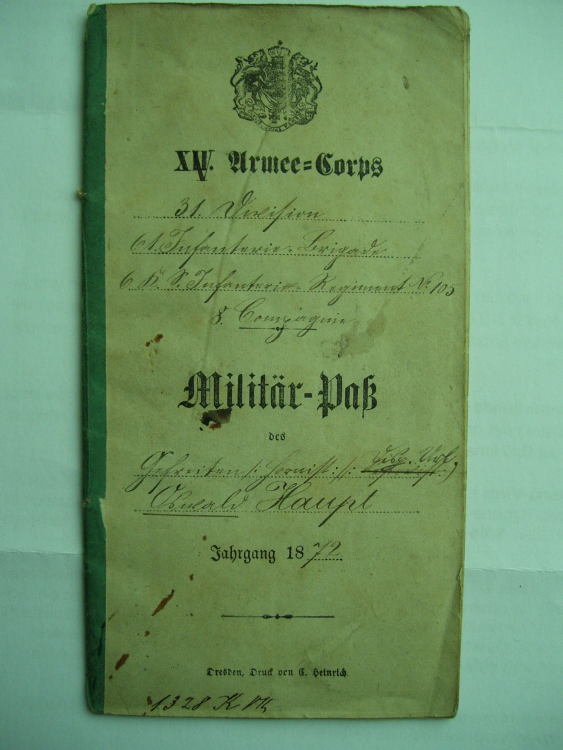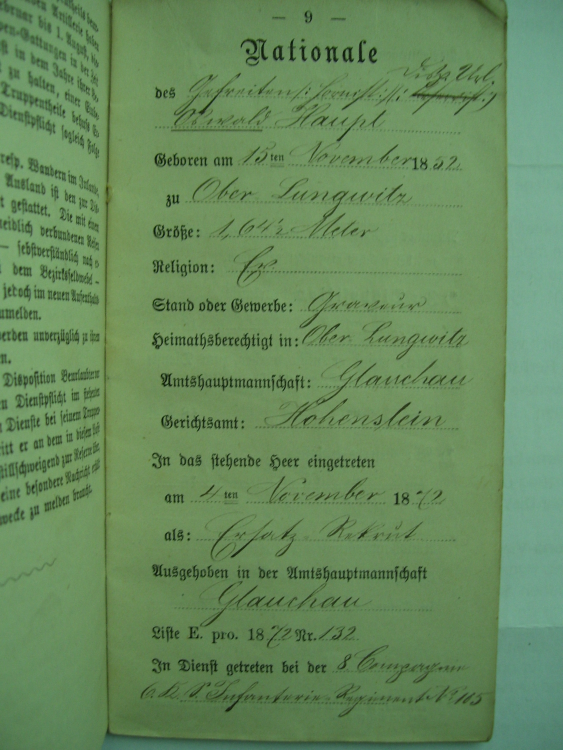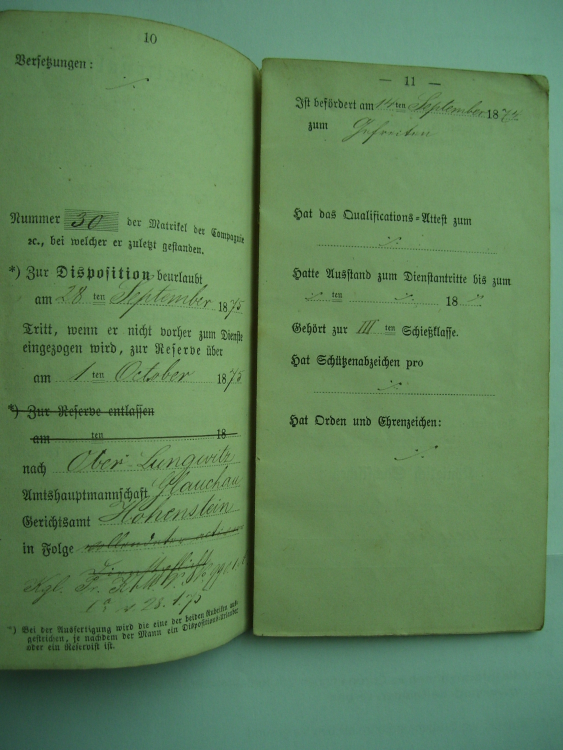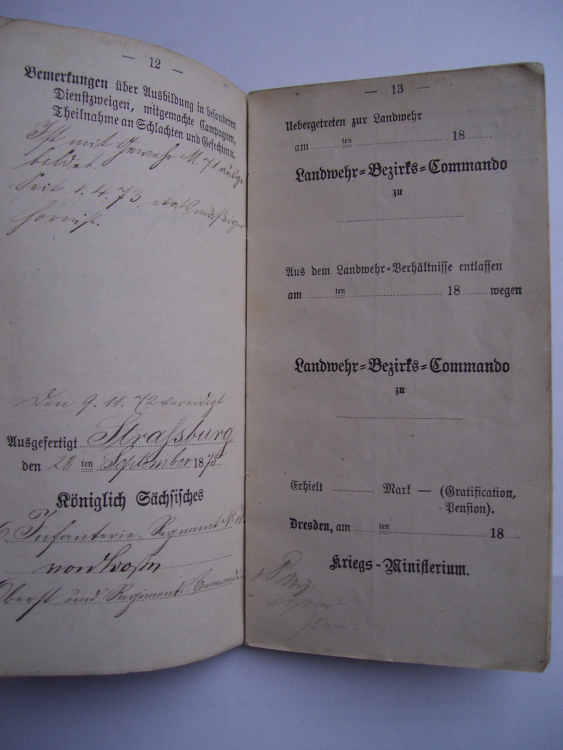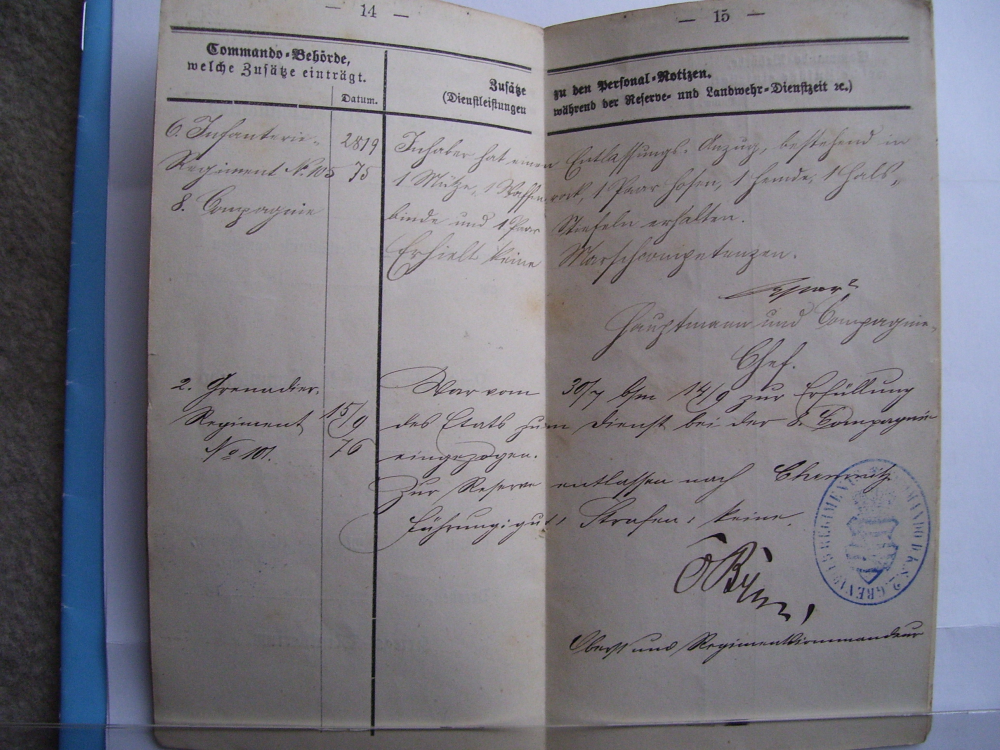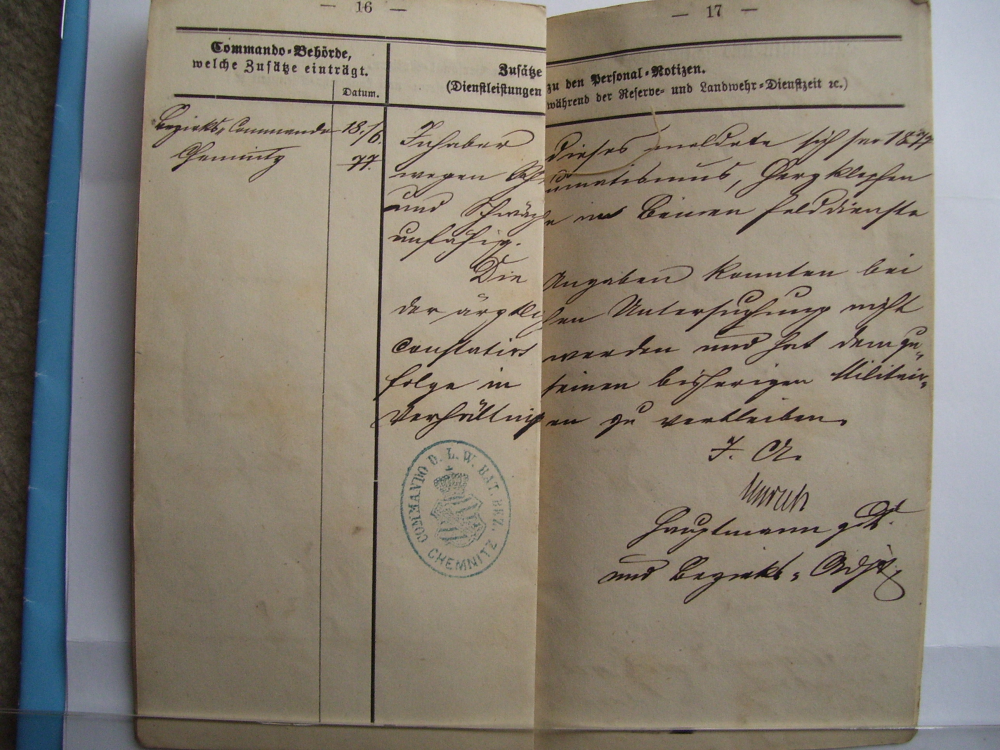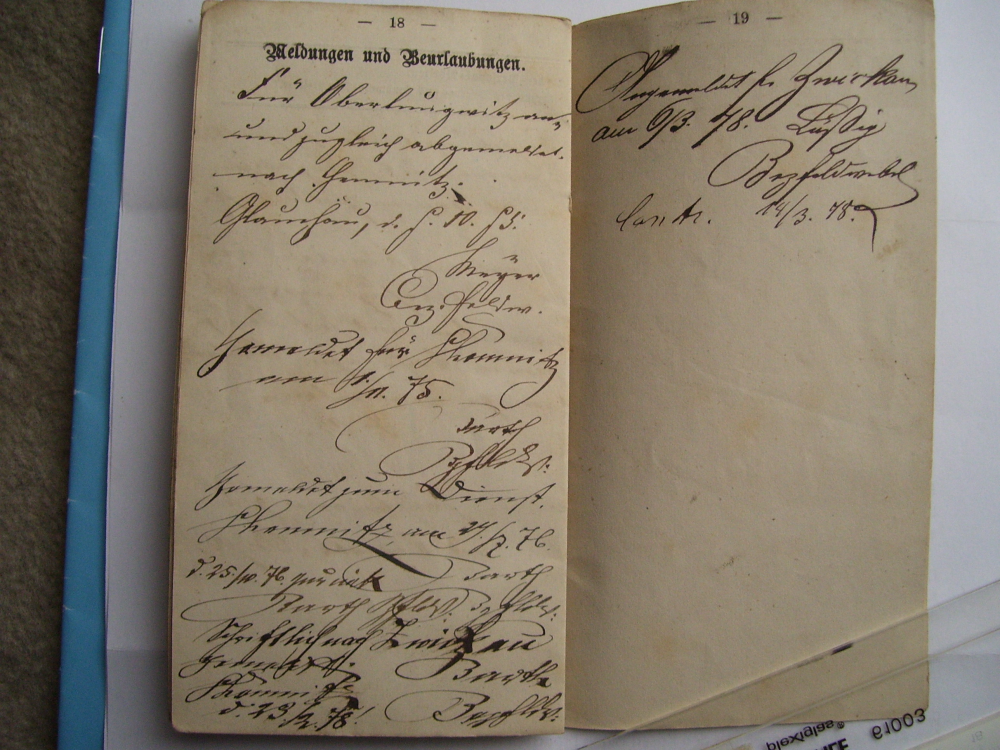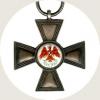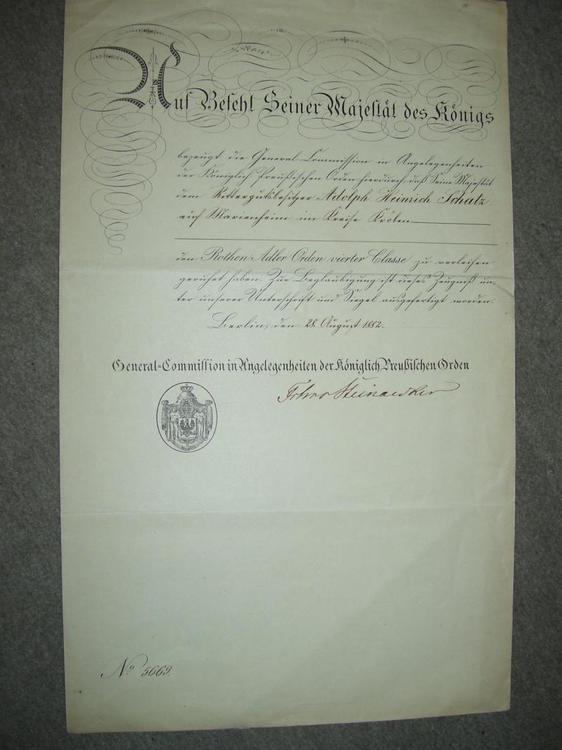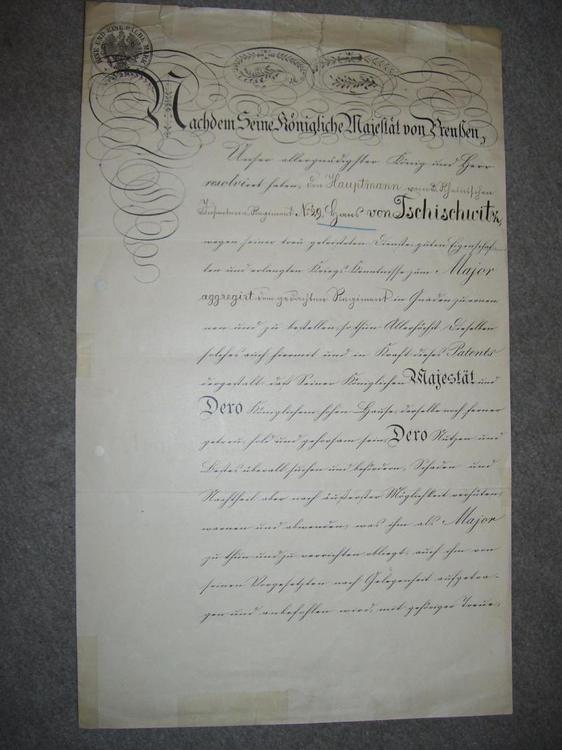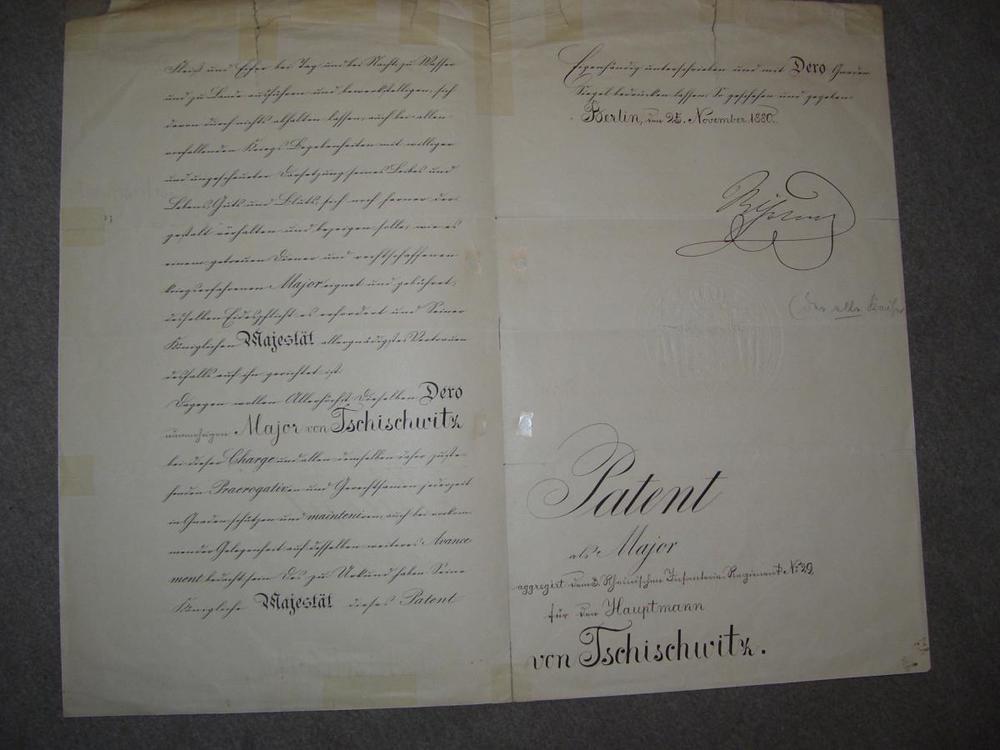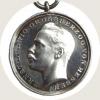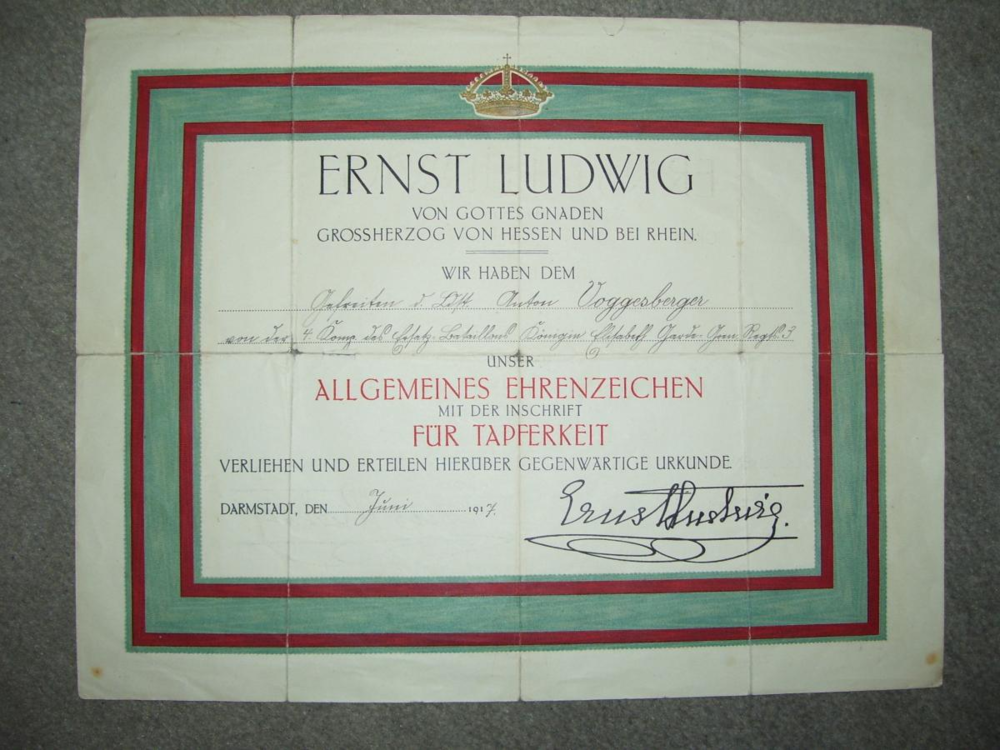Search the Community
Showing results for tags 'urkunden'.
-
An Arbeitsbuch for a glazer in Wien in almost mint condition, has hardly been filled out, as the person was self-employed. Edmund Hávássy, born in Wien, 11. May 1902, had two children. The name is clearly of Hungarian origin. He made his apprenticeship as a glazer from 1916 till 1919, passing his exam on 18.6.1919. His driving licence, Führerschein Kl. 4,4 is entered in the book. The book was issued on 17.10.1940 by the Arbeitsamt Wien-386 A membership book for the DAF - Deutsche Arbeitsfront for Leo Groß, born 1924 in Niemegk (Brandenburg), issued by the D.A.F. Gauverwaltung der Mark Brandenburg on 1.4.1940. He is entered as "kaufmännischer Lehrling", an apprentice for commerce, anything ranging from salesman to office-clerk. Stamps entered from April 1940 till 16.12.1941, thereafter probably called up for military service.
-
Some items from the Garde-Füsilier-Regiment Two identity discs for Füsilier Max Pohl, born 1891 - Address: Berlin, Müllerstrasse 134c Smaller disc is with full length original black/white/red cord (Reich), bears only the name, Füsilier and service number. The larger disc is with full length original black/white cord (Prussia), bears all details, originally with Ersatz-Bataillon as a recruit, thereafter with 8.Komp. (II.Btl.)These old discs were in use till around the outbreak of war, then a split disc was introduced. The man would have been originally recruited about 1911. He must certainly have served in WW1. Together with a single fieldgrey shoulder strap from the Garde-Füsilier-Regiment. These items were acquired in the Berlin antiques market in 2000 from the same source. Possibly from the same man. The former regimental barracks had been right near to this place. A paper "Gefechtsstreifen", as were pasted into service books. This one was found loose in an original regimental history and has not been "used", some of the entries are original hand-written. This was the battle record of the regiment 1914-18. An orginal Militärpass from 1888 for another soldier of the Garde-Füsilier-Regiment in almost perfect condition for it's age. Discovered at a Berlin fleamarket. This is for a one-year volunteer, Richard Robert Holger Kustenbach, born 1863 in Cotensleben/Anhalt. He only served for a very short time and was invalided out. Very few entries, but interesting as an early example. Interesting to note, that the book is white, which was for the guards regiments. Infantry books had a blue cover with the notation "Provinzial-Infanterie". Note also the early 1871 style eagle. A reproduction print by Schindler, 1880, of soldiers of the Garde-Füsilier-Regiment, showing an Infanterist, Schellenbaumträger and Hoboist (latter two musicians). Charakteristic of the regiment were the silver buttons, black plume and blackened leather equipment and the yellow shoulder straps. Garde-Füsiliers were popularly known as the "Maikäfer". They also took part in the fighting in 1918/19 against Spartakist and communist uprisings in Berlin and elsewhere. Unfortunately, poor picture quality. Transcription, Berlin, 20.10.2002
-
Militär-Paß and Abrechnungs-Buch, father and son, with a variation in name spelling Abrechnungs-Buch, Musketier Heinrich Wilkens, 7. Compagnie, Infanterie-Regiment Nr.77, 1867 Militär-Paß, Landsturmmann Gerhard Wilksen II Notice difference in spelling, possibly an error at the time? Nationale: Personal details Payments Service record, Eastern Front Payment records, 1864 Service and dismissal records till 28.11.1918
-
Verleihungsurkunde zum Flugzeugführerabzeichen, 19. August 1943 Original signature: Generaloberst Bruno Loerzer, an ace from WW1 For Unteroffizier Stefan Hruschka Issued by The Reichsminister für Luftfahrt On the reverse of this document is some Gekritzel. Have to decipher this. Should not be on the back of this document, probably no other paper at hand at the time. An address, Kieferstation 27, 7 Hof ) Mantel, etc. and a telephone number? Bahnmeisterteil Hagen 1 87625 Österreich Mietervereinigung Österreich: I Raiffeisenstraße 15/5 Also an address in Hullendorferstr. 25 / Par. 7/ Samstag vormittag 1/2 10
-
Awarded to Christel Spring, Bann 420, Wandsbek on 24.2.1943 Facsimile signature: v. Tschammer u. Osten, Obergebietsführer, im Auftrag, 1. Stellenleiterin Gretchen Kirchner, with stamp NSDAP Hitlerjugend Bann 420 Wandsbek, Verwaltung
-
 Document Konvolut of Kurt Schneider, Infanterie-Regiment Herzog von Holstein (Holsteinisches) Nr. 85 He is last listed as Hauptmann a.D. (außer Dienst) in 1930. He also had associations with Reserve-Infanterie-Regiment 76. The set is not entirely complete. Missing are the Patents for Oberleutnant and Hauptmann, the documentation of any awards received 1914-18, as well as the Militärpaß and Soldbuch/Abrechnungsbuch, etc. Zeugniß der Reife zum Fähnrich Patent als Fähnrich der Infanterie Zeugniß der Reife zum Offizier Patent zum Leutnant der Infanterie
Document Konvolut of Kurt Schneider, Infanterie-Regiment Herzog von Holstein (Holsteinisches) Nr. 85 He is last listed as Hauptmann a.D. (außer Dienst) in 1930. He also had associations with Reserve-Infanterie-Regiment 76. The set is not entirely complete. Missing are the Patents for Oberleutnant and Hauptmann, the documentation of any awards received 1914-18, as well as the Militärpaß and Soldbuch/Abrechnungsbuch, etc. Zeugniß der Reife zum Fähnrich Patent als Fähnrich der Infanterie Zeugniß der Reife zum Offizier Patent zum Leutnant der Infanterie -
Officer's Patent for Vizefeldwebel Ulrich Ludwig Oskar Xaver von Lentz to Leutnant der Reserve of 2. Kompagnie des Königl. Preußischen Kraftfahr-Bataillons* Signed by Friedrich August, König von Sachsen seconded by Viktor von Wilsdorf, Kriegsminister, Dresden, 2. March 1917 *2. Komp. was Sachsen 4. Komp. was Württemberg, the remaining two companies were Garde (Prussia)
-
A passport for citizens of the DDR, issued 1986, valid till 1989 for a woman born 1919 in Wien (Austria) and living in Perleberg, DDR, Theresia Bernhöft, geb. Zeißl. There are numerous visa and transit stamps, having travelled relatively frequently to Austria via Czechoslowakia. Older citizens retired were easily able to get visas and travel to other countries (as they were no longer needed), younger people could not travel to non-Warsaw-Pact-Countries** unless they travelled in groups or in an official status, as trusted members of the party. Even they were closely surveilled, and were never "alone" - in case of any escape attempt. ** also known as RGW-Länder - Rat für gegenseitige Wirtschaftshilfe - Engl.: comecon, as opposed to Western Europe with the E.W.G. = Europäische Wirtschafts-Gemeinschaft (now called EU)
-
Military papers for Unteroffizier Otto Johann Paul Berndt, a soldier in the Leib-Kompagnie, 1. Garde-Regiment-zu-Fuß, Potsdam. A certificate of possession for the Landwehr-Dienstauszeichnung 2.Klasse, dating from 1. April 1910. The award was granted on 16. December 1909 for having fulfilled his military conscription service and his duties with the Landwehr for a period of 9 years. The document only states that he is with the Garde-Infanterie without mention of Regiment and is signed by Gr. von Schauroth, Oberstleutnant in the Bezirkskommando III Berlin and document stamp. The document states that Uffz. Bernd is from Weißensee, which is now a suburb of East Berlin. An example of the decoration is shown in one of the next photos. This type of decoration was awarded till 1913, thereafter, a medal on a blue ribbon. A certificate for the Iron Cross 2. Class to same recipient, who is this time serving with the Königlich Preußisches Garde-Landsturm-Bataillon Wartenburg (G.11). Auf allerhöchsten Befehl Seiner Majestät des Kaisers und Königs hat der Kommandierende General des Beskidenkorps Seine Exzellenz Generalleutnant Hofmann dem Unteroffizier Otto Berndt das Eiserne Kreuz 2. Klasse verliehen, über dessen Besitz vorläufig dieses Zeugnis ausgestellt wird. Im Felde, den 25. Juni 1917 (Signature) Hauptmann und Bataillonsführer The "Beskidenkorps" was the XXXVIII. Reserve-Korps under Generalleutnant Hofmann from 1915 till 1917 on the Eastern Front, previously under General von Eichhorn, later returning to the Western Front and retaining this title. Compared to other documents, the WW1 Iron Cross documents look rather "improvised", unlike the 1870 and WW2 versions, which were fairly standardised. Further documents to follow. Berndt served with the Leib-Kompagnie (1.Komp.) of 1. Garde-Regiment ! An Unteroffizier of the Leib-Kompagnie, 1. Garde Regiment zu Fuss, Immo Freiherr von Gayl, born 1888, photo dated 1906, taken presumably in the gardens of Sans Souci, Potsdam. An aristocrat serving in the ranks, which was not uncommon in the Guards Regiments
-
Luftwaffe Promotion Document Bestallungs Urkunde for a Feldwebel raised to Oberfeldwebel for Hans Holzner, Flugzeugüberführungs-Geschwader No.1 (Süd), based in Neubiberg near Munich, dated 27.7.1943 and signed by a Major Fachner (?), acting as a regimental commander, signature not quite legible. Document has the old style first pattern Luftwaffe eagle, older stocks of forms were always to be used up in order to save material. The quality of the paper used was not always the best, due to wartime shortages. The Flugzeugüberführungsgeschwader had the task of delivering aircraft to a set destinatiion, especially involving the delivery of new aircraft from the production to an airfield, where required. The recipient of the document could well have been a pilot, or perhaps maintenance personnel. More info on this unusual unit can be found in internet. (8.2.2016)
-
A wartime letter, dated 22. November 1941 from Alfons in Marienbad (Sudetenland) to his Liesel. Some folds on very lightweight quality paper with a gold embossed Luftwaffe eagle first pattern, has survived in very good condition. Alfons does not seem to enjoy staying in Marienbad, which he claims is very boring and provincial. He was obviously stationed there with the Luftwaffe. Unfortunately no envelope or details of addressee, apart from first names. Obtained some years ago from an address in England, obviously brought there as a souvenir.
-
Gefreiter Herbert Rakowksi, Infanterie-Regiment 90 (Wentorf). A short life which began with the Reichsarbeitsdienst in 1938. He went through the Polish campaign in 1939, and through the Battle of France. He fell on the same day as the City of Paris, 18. June 1940. Included is the completed Wehrpaß and correspondence from his Regiment sent to his parents in Hamburg, Marschnerstraße. A map sketch of the position of his grave is also included. The papers are in very fine condition and were kept in memory of the son. This group was obtained in early 1989 from Detlev Niemann. A condolence letter from the acting company commander Oberleutnant Zorn to the parents Übersendungsschreiben to the parents concerning return of papers as a keepsake, informing that these will be valid for pension claims for the parents and their heirs. Letter - Umbettungsbescheid - of 5. August 1942 from the Wehrmachtsauskunftstelle (WASt.) Berlin to the parents, informating that the gravesite had to be shifted to a safer place, and that he had been buried in an individual coffin. A gravemarker was errected, the Oberkommando der Wehrmacht is responsable for the upkeep of the grave... Signed: Peters Letter concerning details of the gravesite with enclosed map sketch. A photo of the grave was also included, this was not amongst the papers. Remisement: Sketched map of gravesite opposite airfield on southern exit of St.-Sauveur, direction Vesul
-
Ehrenliste der Deutschen Luftwaffe, 7. September 1942 These were regular bulletins published almost every week. This edition contains exclusively awards for the Deutsches Kreuz in Gold. Other examples will also include other decorations such as the Knights Cross or the Fliegerpokal, etc. These documents have now become scarce and expensive. This example includes at least one well-known name, such as the famous Battle of Britain pilot, Gerhard Barkhorn. At the end of the page is the facsimile signature of Hermann Göring. Unteroffizier Erich Baxmann, Bordfunker in einem Kampfgeschwader Gerhard Barkhorn, Oberleutnant in einem Jagdgeschwader
-
An award document of the Freie und Hansestadt Hamburg for a soldier in Landwehr-Infanterie-Regiment 85 Unteroffizier Otto Wiegand He received the Hamburger Hanseatenkreuz, one of the very few medals that were awarded by the City of Hamburg, which had a tradition of neither accepting nor awarding wearable decorations, exceptions, see further below (being a City Republic, and not recognising Kings and Princes). One of the exceptions was the Silver Medal for the Hanseatic Legion, 1815, the Bronze Medal for the Firefighters during the Great Fire of 1842 (only for non Hamburg fire-brigades from outside, who helped), and this particular cross, which was only awarded 1915-18. All these certificates were signed by Oberregierungsrat Dr. Siemsen, the award came in a white cardboard case with a silver embossed Hamburg emblem on the lid, now rare. The document is dated Hamburg, 6. January 1916 and signed by Oberregierungsrat Dr. Siemsen. Infanterie-Regiment Herzog von Holstein No. 85 was the parent regiment of the above formation and was based in Kiel, Rendsburg and Neumünster. An example of the decoration. These were manufactured by Fahnen-Fleck in Hamburg 11, a firm, which is still in business. See also previous article under Other nations medals and badges. The list of wearable decorations awarded by the City of Hamburg is relatively small: Kriegsdenkmünze für die Hanseatische Legion, 1815 Medaille für Hilfeleistung beim Stadtbrand, 1842 Silberne Medaille für 25 Jahre im Hamburger Bürgermilitär, 1865-68 Hamburger Hanseatenkreuz, 1915 Kreuz für Treue Dienste, 1916 Silberne Rettungsmedaille, 1918 Ehrenkreuz Hanseatische Vereine vom Roten Kreuz, 1924-1933 A further award was the traditional Portugaleser (non portable medal), originally in gold, and dating from around 1574, today, awarded in bronze or other metals for outstanding service or merit to the city.
-
An award document for the Königlich Sächsische Friedrich August Medaille in Bronze, on the ribbon for war service for Gefreiter d. Landsturm Erwin Schröter, 7. Kompagnie / Reserve-Infanterie-Regiment 102 dated Königliches Hauptquartier (Sächsisches), den 3. September 1917 Signed by von Kirchbach, General der Artillerie zur Disposition, Generaladjutant Seiner Majestät des Königs von Sachsen, Kommandierender General des XII. (1.Kgl.Sächs.) Reserve Korps
-
Bestallungsurkunde - promotion document for Unteroffizier Willi Bohlmann, born 27. October 1888 in Pasewalk, with 7. Kompagnie / Leib Grenadier Regiment König Friedrich Wilhelm III. (1.Brandenburgisches) Nr. 8 in Frankfurt/O. dated 11. April 1913 promoted from Unteroffizier to "Sergeant", signed by Regimental Commander v. Uthmann* (barely legible) * Oberst Paul v. Uthmann was regimental commander till .6.1913, thereafter succeeded by Konrad Finck v. Finckenstein, The Kaiser was Commander in Chief since 1888.
-
A citation - Verleihungsurkunde of Iron Cross 2nd class 1939 awarded in late 1939 to Gefreiter Erwin Tiedtke of Stab, III.Btl. Infanterie-Regt. 162, which was raised in Summer 1939 in East Prussia. The document was written in Eschweiler in the West in November 1939 and signed by the Divisional Commander Generalleutnant Siegfried Haenicke. The document has unfortunately punch holes and slightly folded, otherwise in top condition. No further information on Tiedtke. Generalleutnant Haenicke bacame a prisoner of war with the Russians in 1945, and was interned in the Russian Sonderlager Mühlenberg in Thüringen, where he died in 1946.
-
Award document for Mecklenburg-Schwerin Militärverdienstkreuz 2.Klasse to recipient Vizefeldwebel der Landwehr Friedrich Paetow in Reserve-Infanterie-Regiment 74 dated Schwerin, 24. August 1916 The document has a facsimile signature of Friedrich Franz (IV.) and a counter signature of Freiherr v. Heintze* *Oberstleutnant Frhr.v.Heintze, Flügeladjutant des Großherzogs von Mecklenburg-Schwerin S.747, "Das erlebnisreiche Leben eines Wilhelminers", Oldenbourg Verlag
-
Two military passes, Bavaria: Landsturm Militär-Paß for Kanonier Johann Heinrich Spanheimer, later Gefreiter in Königl.Bayerisches 2. Feld-Artillerie-Regt. "Horn", 4. Ersatz-Batterie, Jahresklasse 1917. He was later awarded the EK II. With it's original protective sliding cover. Militär-Paß for Stabs-Gefreiten Georg Schmidt in K. Funker Ersatz-Abteilung, Rekruten-Depot, Jahresklasse 1918, who was later awarded the EK II.
-
Personal documents for Karl Heinrich Fritz Johann Hanf, born 7. August 1908 in Hamburg Wehrpaß issued in Hamburg, 9. February 1940 by Wehrbezirkskommando IV Hamburg. Emblem has been postwar deleted, partly erased by bearer. Never served. He is recorded as Kellner/Hilfsarbeiter by profession, education: Volksschule, details of parents, both deceased. Details of Musterung, 9.Feb.1940, "Kriegsverwendungsfähig", zurückgestellt bis 31.7.1942. Several times as "zeitlich untauglich" and finally till 31.5.1945. Personalausweis BRD for Karl Heinrich Hanf issued at Bezirksamt Hamburg Nord on 17. August 1966, valid till 16. August 1971. Under his personal description he is recorded as only 1.60 tall. Domicile entered as Erikastraße 39 II. in Hamburg-Eppendorf ( 2000 Hamburg 20 ), with official stamp. In postwar years marriage / Relationship with Frieda Baxmann, geb. Kruse at same address.
-
Personal papers of a Oswald Kreizarek, born 23. March 1902 in Königshütte i./Oberschlesien, later in Berlin and then Hamburg. Two certified copies of marriage certificate dated 6. July 1945 and 1. April 1967. Marriage to Elsa Möhring in Hamburg, 15. August 1931. A Polizeiliches Führungszeugnis, issued in Hamburg, 30. July 1945 - with remark - Strafen: keine (which is the most important) An Ersatzbescheinigung from the Versicherungsanstalt Berlin as confirmation of national insurance from 1919 till 1941 (remark: card 6 to 9 missing), dated 14.1.1941 A reference and confirmation of employment at the mineral water factory in Hamburg 24 for Oswald Kreizarek, employed since 1923, dated 19. October 1945 Certified Baptism Certificate (in place of Birth Certificate, as church issued) for the father, Häusler und Untersteiger Karl Kreizarek, born 1. December 1864 in Ludwigsdorf Kreis Kreuzburg i./Schl. Certified in Bankau i./Schl., 14. August 1917 Certified Marriage certificate of the father, Karl Kreizarek (Werkarbeiter) and his spouse, Susanna Eva Rosenblatt from Königshütte on 27. May 1890- Issued in Königshütte i./Schl., 12. June 1940. Stamped and signed, Der Standesbeamte in Königshütte, official NSDAP stamp Various certified copies of ancestral documents, issued on 3. July 1943 in Königshütte, each with official NSDAP stamp. These were most likely need as confirmation of pure descent. In postwar years, Oswald always claimed to be from Poland - Königshütte was occupied by Poland since 1945. Certified copy of birth certificate of Elsa Kreizarek, geb. Möhring, 30. December 1903, copy issued in Hamburg-Mitte, 10. April 1967 Oswald and Elsa Kreizarek were friends of the family for many years.
-
An early example of a Saxon Militär-Pass (in Prussia, Militair-Paß), before these documents were standardised, for a recruit in 8. Compagnie / 6. Königlich Sächsisches Infanterie-Regiment No.105 in Straßburg (Strasbourg). The cover bears the Royal Saxon coat of arms, and a printed XII. Armee=Corps designation which has been neatly changed to XV., as this regiment was stationed in Alsace (XV.Armee-Korps) 6. Infanterie-Regiment No. 105 was raised in 1701 and received it's designation 105 within the German Army in 1867. In 1866 it had fought against Prussia, and against France 1870/71. After the occupation of parts of France in 1871, it moved to it's new base in Straßburg/Elsaß, where it remained till November 1918, returning to Saxony for disbandment and demobilisation. The document was named to Oswald Haupt, born 1852 in Ober-Lungwitz nr. Glauchau, and was an engraver by profession. He was trained to use the Gewehr 71. As from 1.4.1873 he was etatsmäßiger Hornist (officially listed Musician). On 14.Sept.1874, he was promoted to Gefreiter - Gefreiter-Hornist. Later tranferred to the Reserve. As from 18.9.1876, he also served in Grenadier-Regt. 101. Last entries, 14. March 1878. All good conduct, punishments: None. Some nice early Saxon stampings, remarkable handwritten notices of the period, note also old style of spelling before later changes. On page 15 is the signature of Freiherr Ô Byrn, Oberst und Regimentskommandeur, this name is listed in the 1906 Saxon Rangliste (Page 27) as a General Lieutenant à la Suite des Grenadier-Regiments 101.
-
A document On Command of His Majesty the King - of a bestowal of the Roter Adler Orden, 4th Class upon the stately home owner - Rittergutsbesitzer - Adolph Heinrich Schatz at Marienheim* in the district of Kröben, Berlin 28. August 1882 by the General Ordens-Commission in The Matters of the Royal Prussian Orders, signed by Freiherr von Steinaecker with the matrikel-no. 5669 This document, an oversized double-folio format, is the older version. An example of the older type of decoration of the Red Eagle Order 4th Class is shown. *Marienheim, Kreis Kröben no longer exists since 1945. It was probably in the Provinz of Posen. Very little evidence of it's existence. That goes to show what happens when a past culture is blotted out by invaders. Most stately homes were confiscated, blown up, plowed over and fortgotten by the new population in the postwar years. The owners were either murdered, put into camps, expelled or deported.
-
An award certificate for the Hessen-Darmstadt Allgemeines Ehrenzeichen für Tapferkeit (Silver) for Gefreiter des Landsturms, Anton Voggesberger in 4.Kompanie, Ersatz-Bataillon of Königin-Elisabeth-Garde-Grenadier-Regiment No.3 (Berlin-Charlottenburg) Award is dated June 1917 and drawn up in Darmstadt. It bears the signature of Ernst-Ludwig, Grossherzog von Hessen-Darmstadt, probably in facsimile. The edge is decorated in the colours of the ribbon of the award. Ernst Voggenberger was possibly from Hessen and serving with this guards regiment, thus being bestowed with the decoration from that state. Soldiers from other states could also receive such decorations. Purchased many years ago from a coin and precious metals shop in Hamburg. Documents of this kind are now getting rarer An example of the decoration, they are not hard to find, usually sterling silver.


